18-20 Jun 2017
Hanna continues with us, as she will do back into Munich.
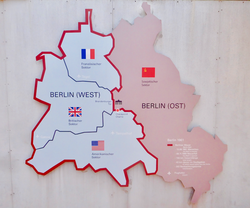
From 1949 to 1990, Berlin was split into an East and a West. From the close of WWII, the Western Allies administered/occupied the sections as shown, and Soviet Union the East. In 1949, the German Democratic Republic formed (East Germany), and East Berlin became its capitol. In October 1990, all of Germany, including Berlin, became one unified country again.
We drove into the city and arrived in the area which was formerly East Berlin. Below is the Fernsehturm (English: Television Tower), built by the Communists. We stayed within former East Berlin, as it had many choices of apartment styled lodging, and is close to all the best sights.
Berlin is rich in tourist sights, especially reminders of the extreme history of 20th century events. We saw much of it, but am sure missed a lot of it having only stayed 3 days.
Berlin is rich in tourist sights, especially reminders of the extreme history of 20th century events. We saw much of it, but am sure missed a lot of it having only stayed 3 days.
At the center of Berlin, we visit the River Spree. We wondered at first if there was something about to happen along the river bank, but apparently these people were just enjoying the Sun and view at riverside.
Left photo below is Berlin Hauptbahnhof, the largest train station in Europe, the city's main railway station and came into full operation 28 May 2006. Other photo - more modern buildings nearby.
The Reichstag building, finished in 1894, was Germany's capitol building until 1933, when it was set fire under dubious circumstances. It was restored by 1999, and once again became Germany's capitol building.
Nearby are memorials to those who died (really murdered) under oppression of first Nazi Germany (to the left) and still others killed during Communist rule. The left is for those of the German political opposition who were simply eliminated by the Nazis. The white crosses represent those who died attempting to flee East Germany during the period 1949-1989.
The Brandenburg Gate, the site where thousands of people gathered at the wall to celebrate its fall on 9 November 1989.
(Wikipedia:)
Located one block south of the Brandenburg Gate, the Memorial to the Murdered Jews of Europe is a memorial to the Jewish victims of the Holocaust. It consists of a 4.7-acre) site covered with 2,711 concrete slabs or "stelae", arranged in a grid pattern on a sloping field. The stelae are 2.38 m (7 ft 10 in) long, 0.95 m (3 ft 1 in) wide and vary in height from 0.2 to 4.7 m (7.9 in to 15 ft 5.0 in). An attached underground "Place of Information" holds the names of approximately 3 million Jewish Holocaust victims. It was completed on December 15, 2004.
Our tour guidebook explained the creators leave it up to the visitor as to what the form of this memorial represents - nothing on site is explanatory. According to the designer's project text, the stelae are designed to produce an uneasy, confusing atmosphere, and the whole sculpture aims to represent a supposedly ordered system that has lost touch with human reason.
Located one block south of the Brandenburg Gate, the Memorial to the Murdered Jews of Europe is a memorial to the Jewish victims of the Holocaust. It consists of a 4.7-acre) site covered with 2,711 concrete slabs or "stelae", arranged in a grid pattern on a sloping field. The stelae are 2.38 m (7 ft 10 in) long, 0.95 m (3 ft 1 in) wide and vary in height from 0.2 to 4.7 m (7.9 in to 15 ft 5.0 in). An attached underground "Place of Information" holds the names of approximately 3 million Jewish Holocaust victims. It was completed on December 15, 2004.
Our tour guidebook explained the creators leave it up to the visitor as to what the form of this memorial represents - nothing on site is explanatory. According to the designer's project text, the stelae are designed to produce an uneasy, confusing atmosphere, and the whole sculpture aims to represent a supposedly ordered system that has lost touch with human reason.
----------------------------------------------------------------------------------------------------------------------------------------------------
Also nearby was this primitive parking area. This is the site of Hitler's last days, his bunker, where he committed suicide as the allies took Berlin.
Also nearby was this primitive parking area. This is the site of Hitler's last days, his bunker, where he committed suicide as the allies took Berlin.
More sights from today's Berlin. While many things from the Communist era have disappeared, or are memorialized (the Wall), these crossing signal graphics, from Communist days, are considered "loved" and remain.
Wiki: The Neue Synagoge ("New Synagogue") was built 1859–1866 as the main synagogue of the Berlin Jewish community, on Oranienburger Straße. Because of its splendid eastern Moorish style and resemblance to the Alhambra, it is an important architectural monument of the second half of the 19th century in Berlin. It was badly damaged prior to and during World War II and subsequently much was demolished; the present building on the site is a reconstruction of the ruined street frontage with its entrance, dome and towers, and only a few rooms behind. It is truncated before the point where the main hall of the synagogue began.
Wiki: The Neue Synagoge ("New Synagogue") was built 1859–1866 as the main synagogue of the Berlin Jewish community, on Oranienburger Straße. Because of its splendid eastern Moorish style and resemblance to the Alhambra, it is an important architectural monument of the second half of the 19th century in Berlin. It was badly damaged prior to and during World War II and subsequently much was demolished; the present building on the site is a reconstruction of the ruined street frontage with its entrance, dome and towers, and only a few rooms behind. It is truncated before the point where the main hall of the synagogue began.
Dining with our friend "Rainbow", who we first met along the Pacific Crest Trail the year prior. She took us to a hip restaurant district and to this Thai restaurant. After the trail, she relocated here from Barcelona to be close to her parents again.
The Berlin Wall
Remnants and reminders remain at its original location throughout downtown.
(left below) Former Luftwaffe Building from WWII (HQ Nazi German Air Air Force)
A tale of three cars - Volkswagen (People's Car), Smart Car about to get squashed (we hope not), Trabants (Soviet cars)
Checkpoint Charlie - border crossing at the boundary of West and East Berlin; the soldiers in short sleeves are actually actors for the tourists.
Berlin is done - we float off to Dresden next:
Okay, this balloon was tethered to the ground, so we drove to Dresden instead.

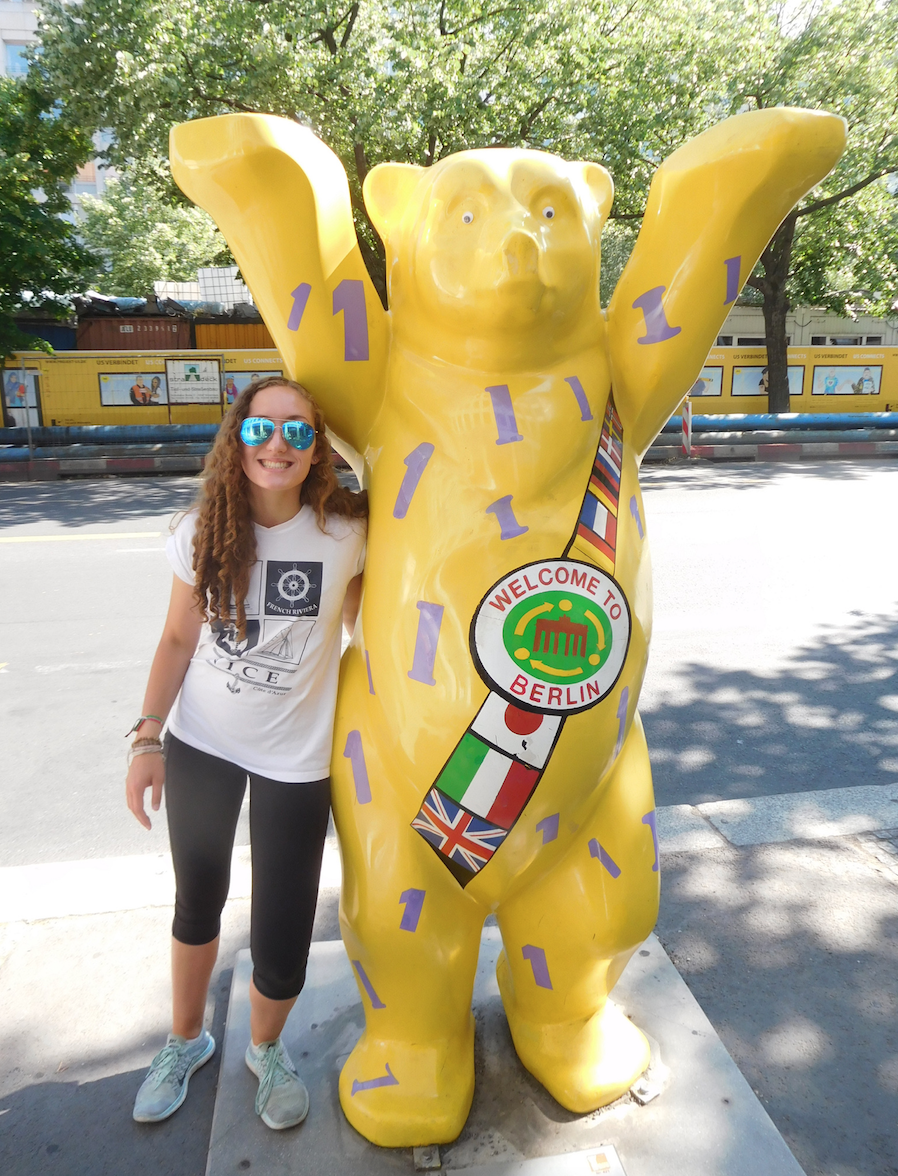
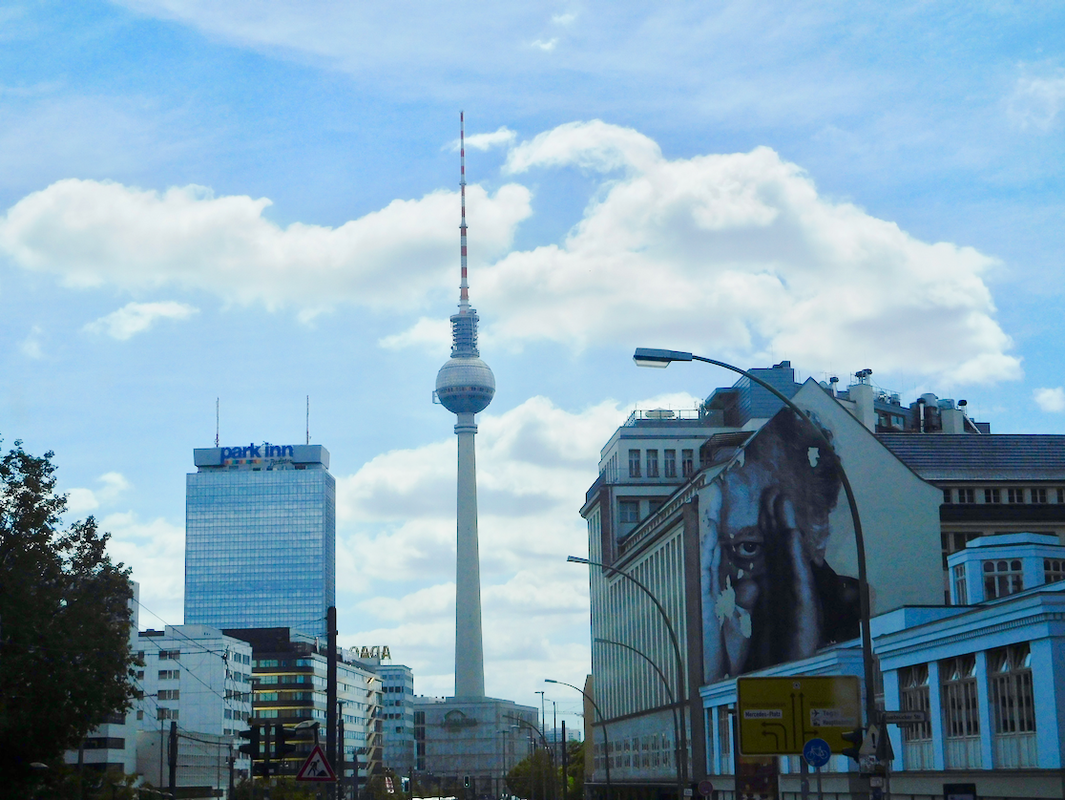
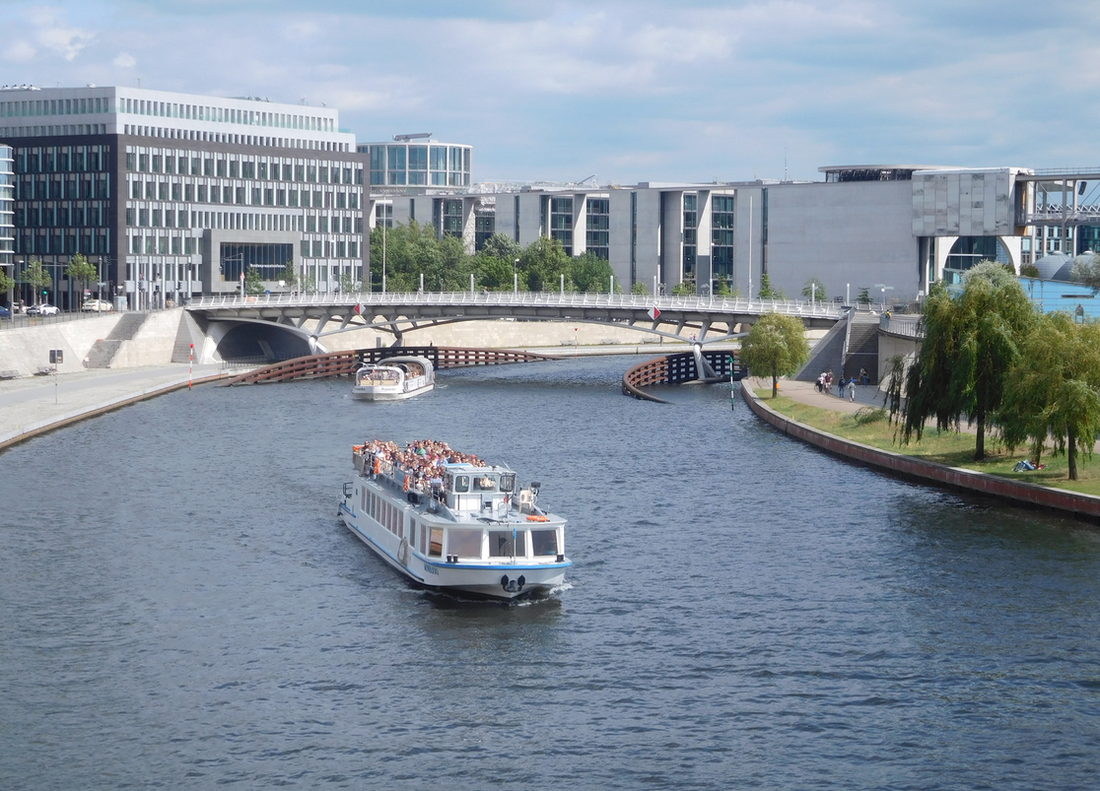
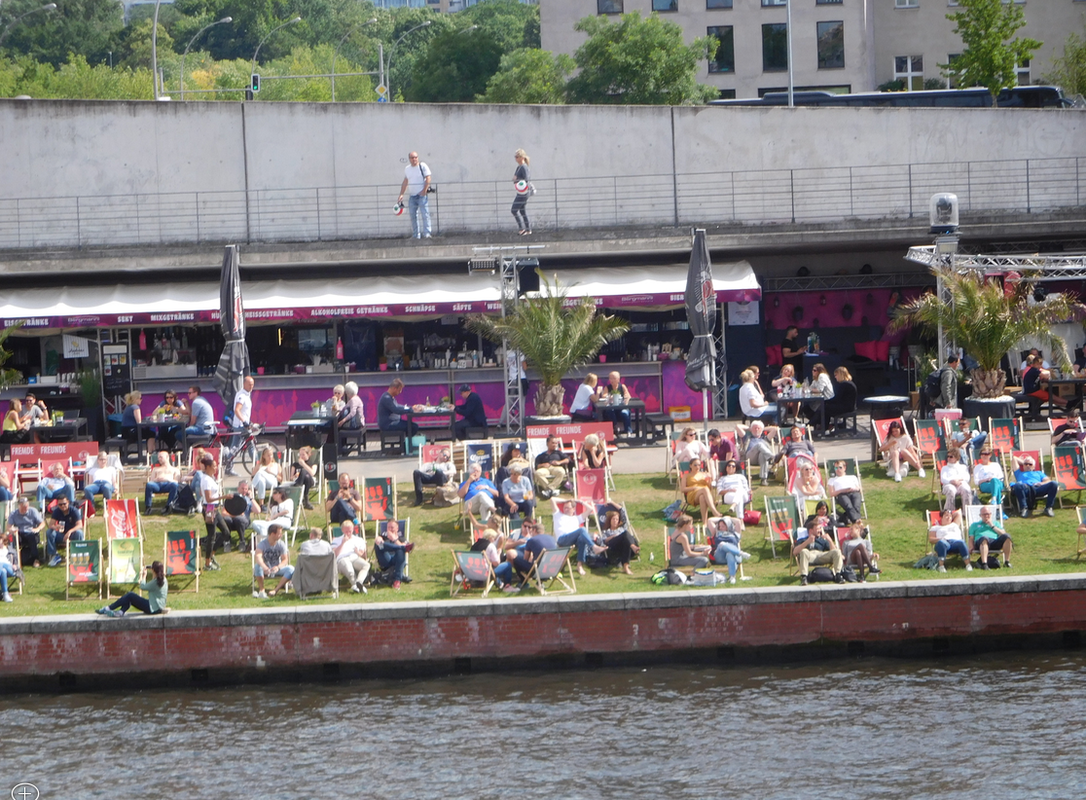
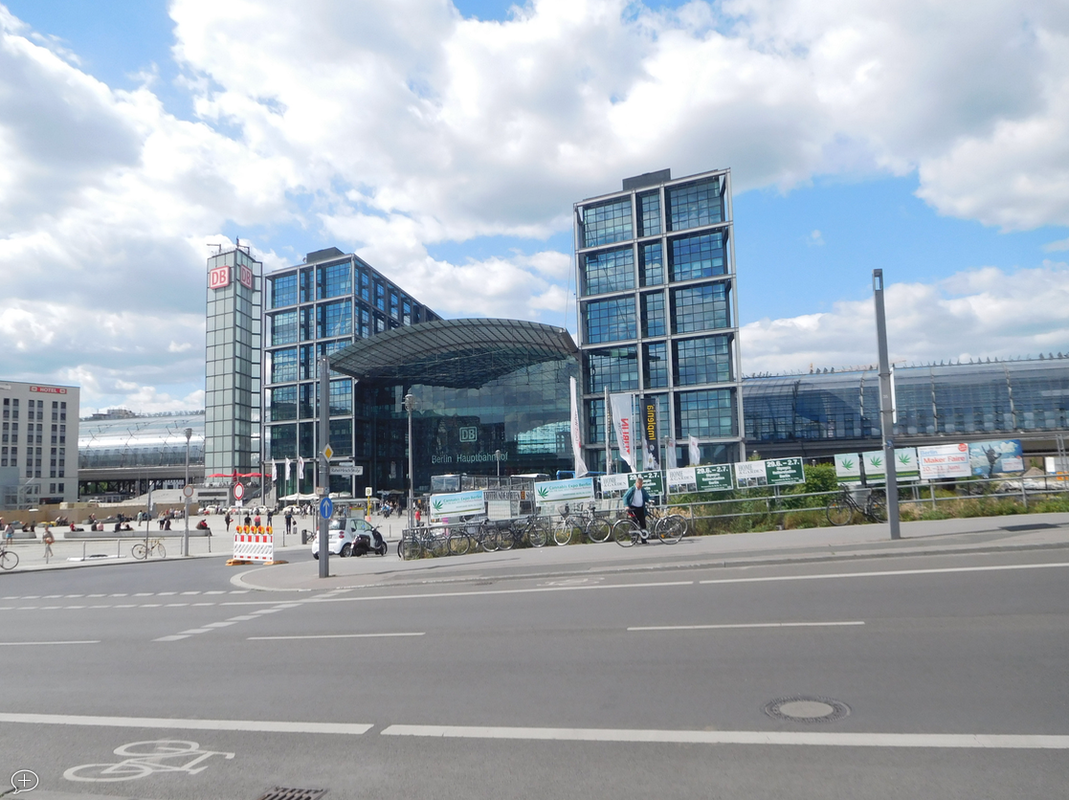
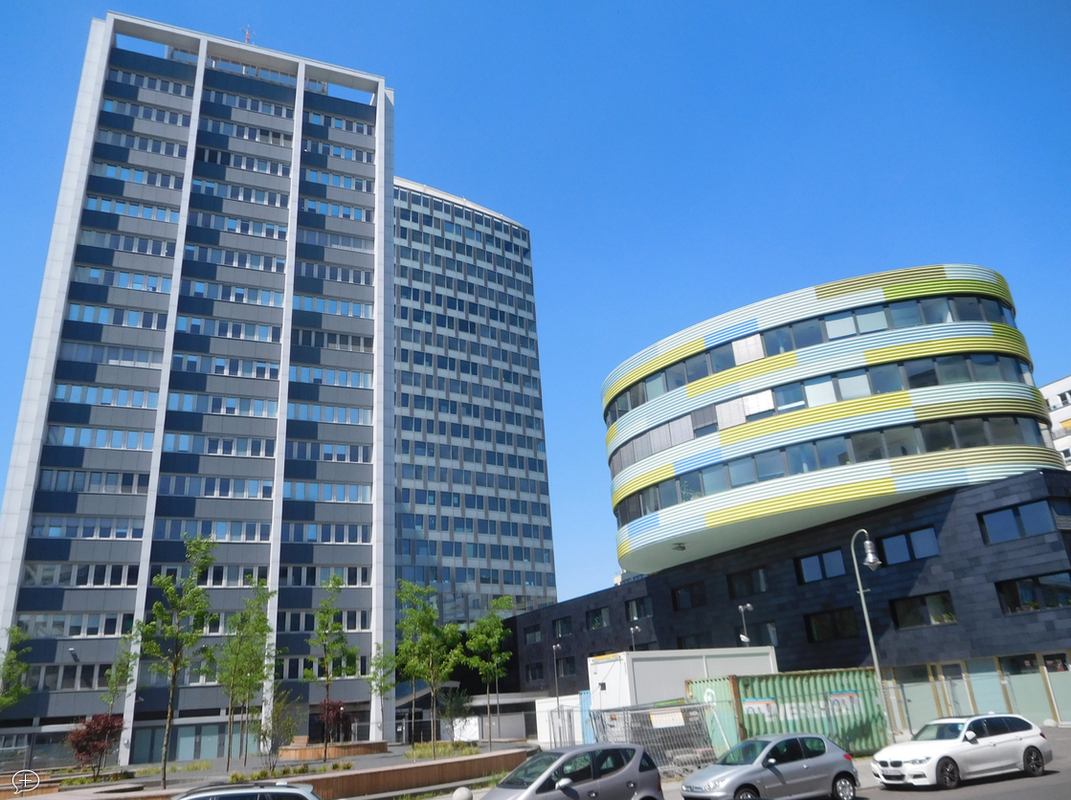
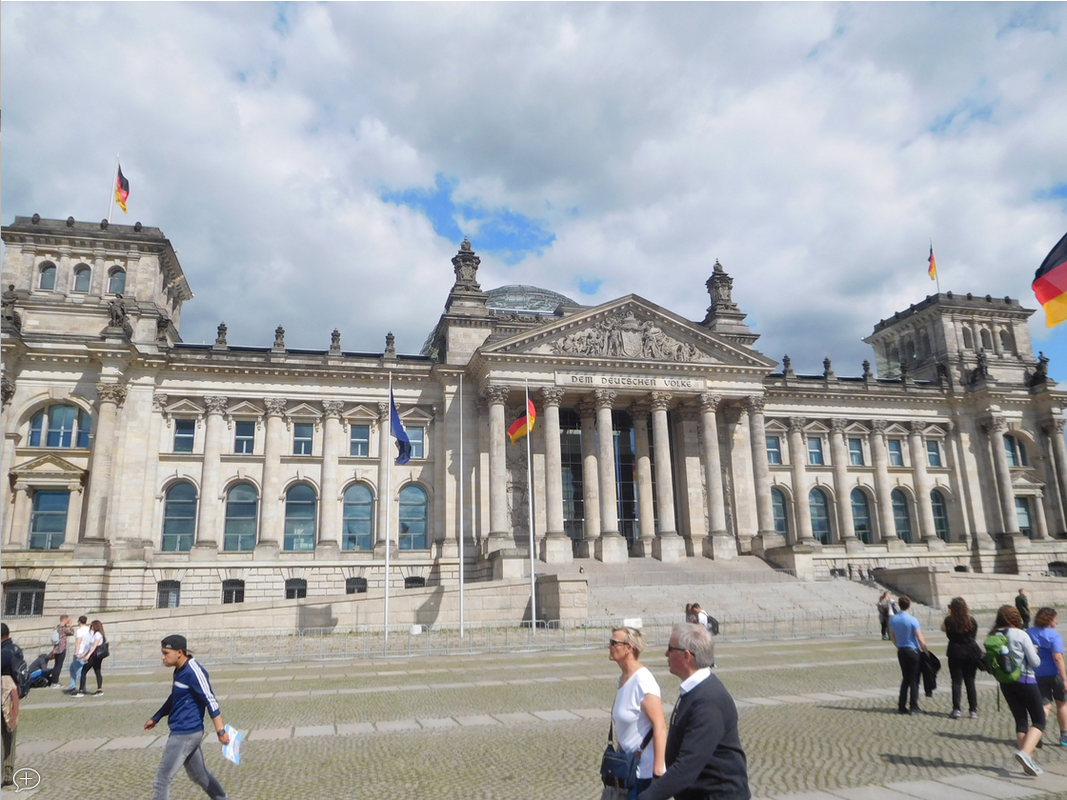
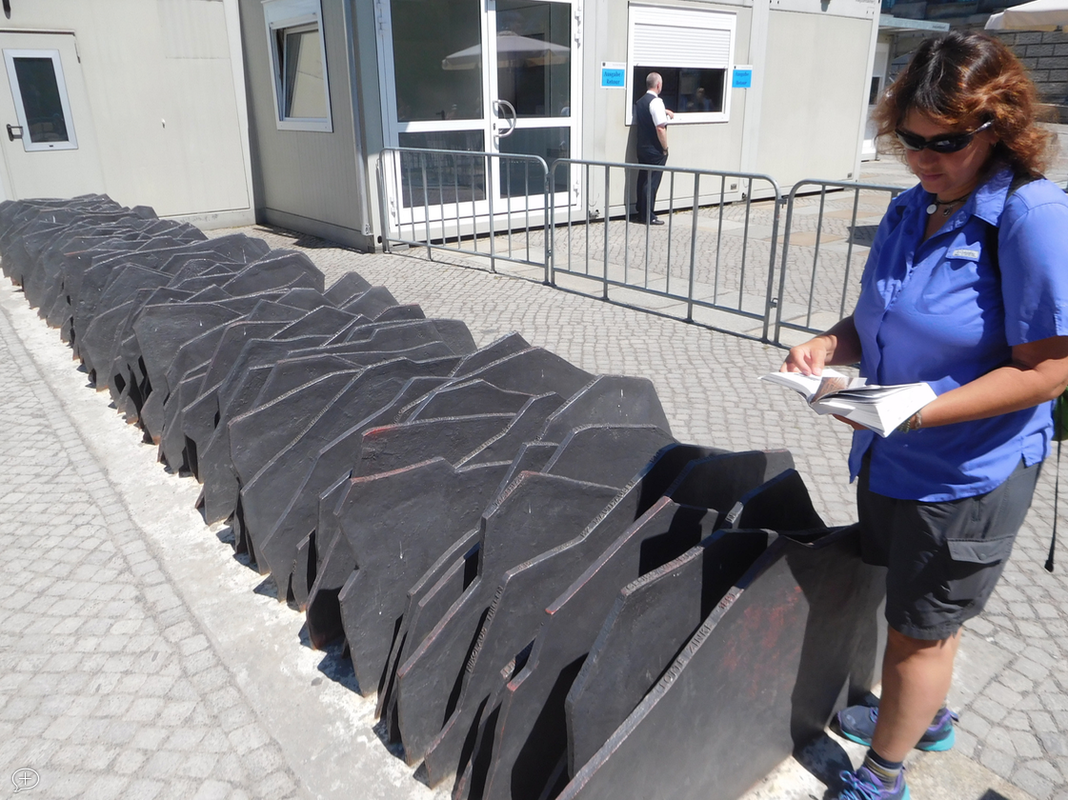
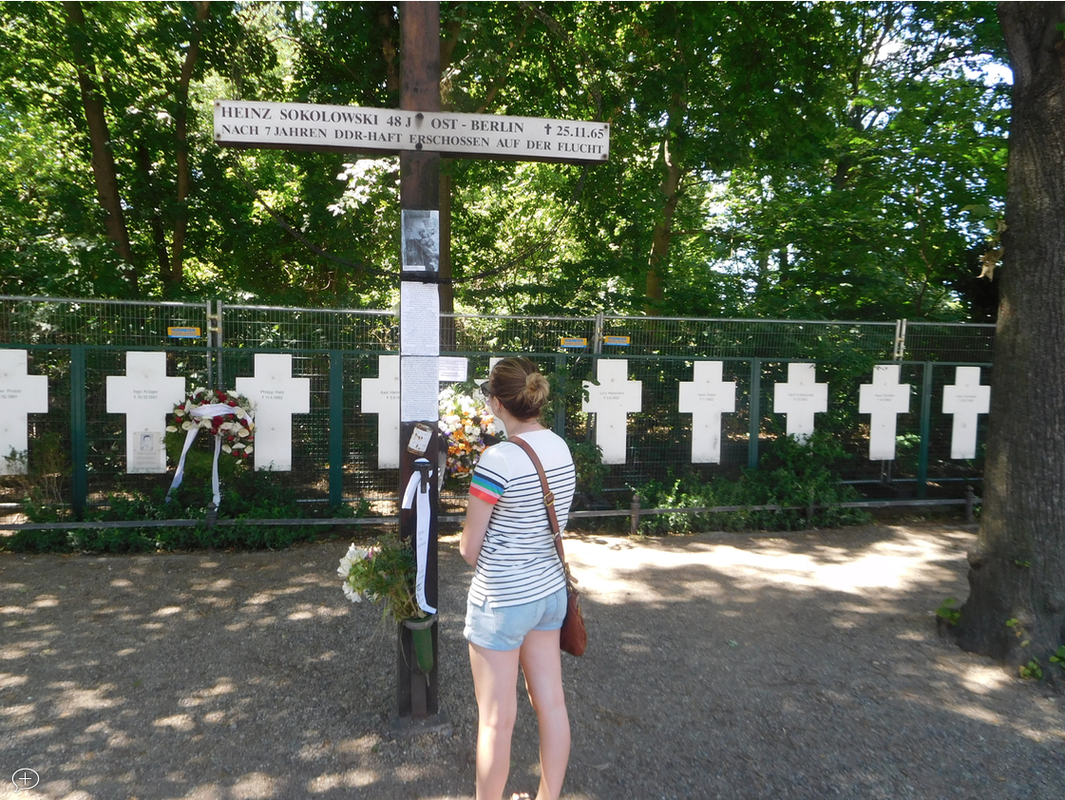
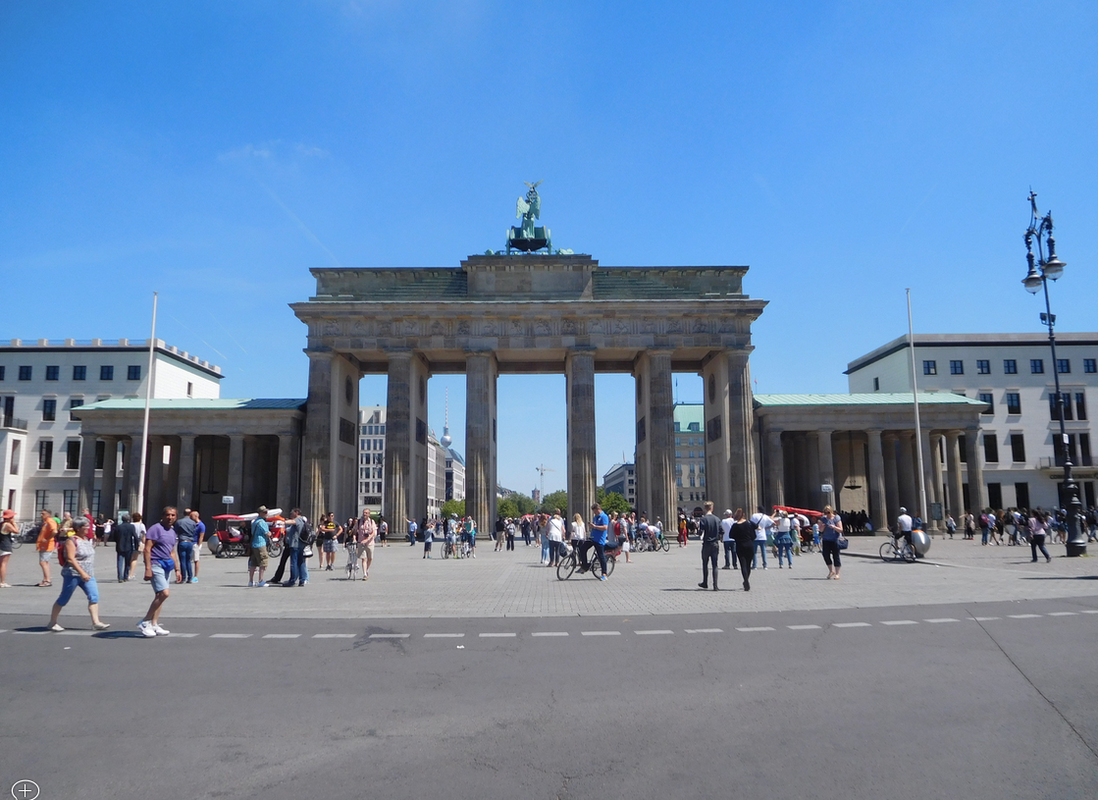
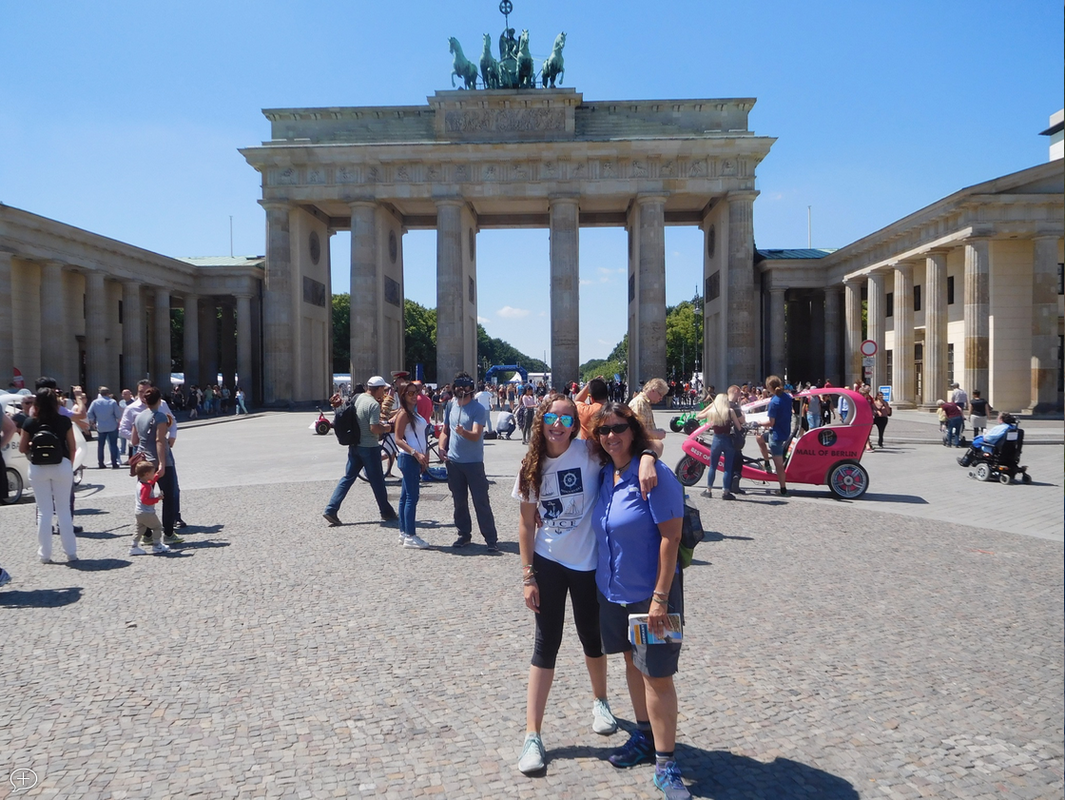
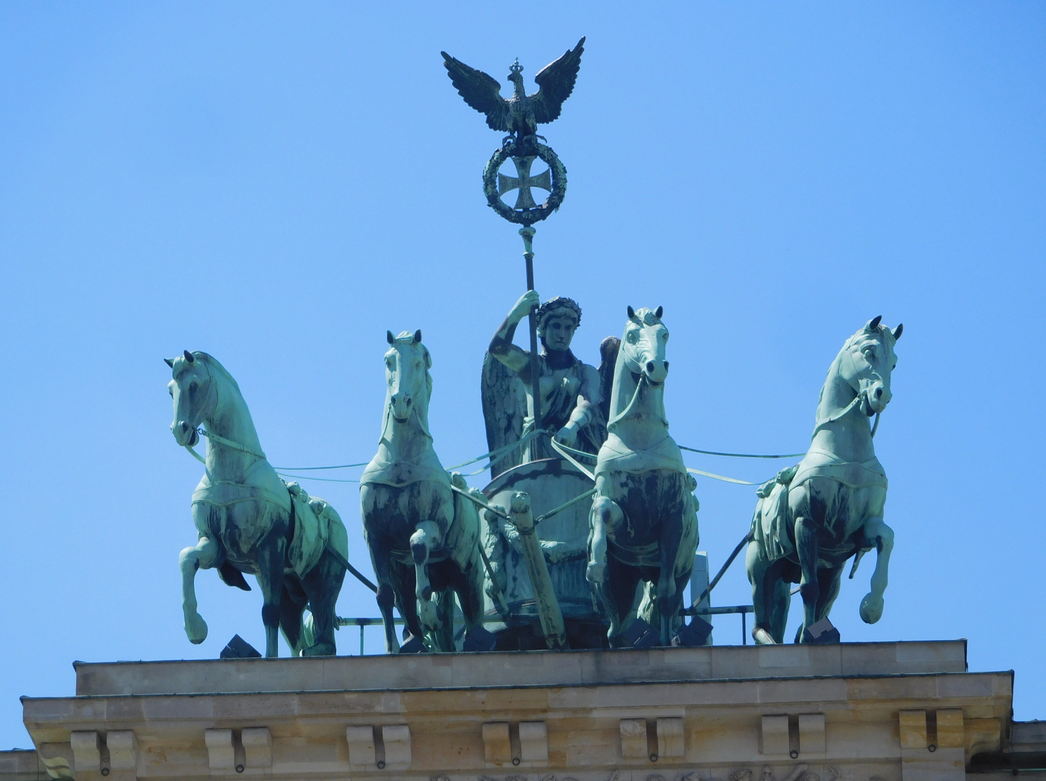
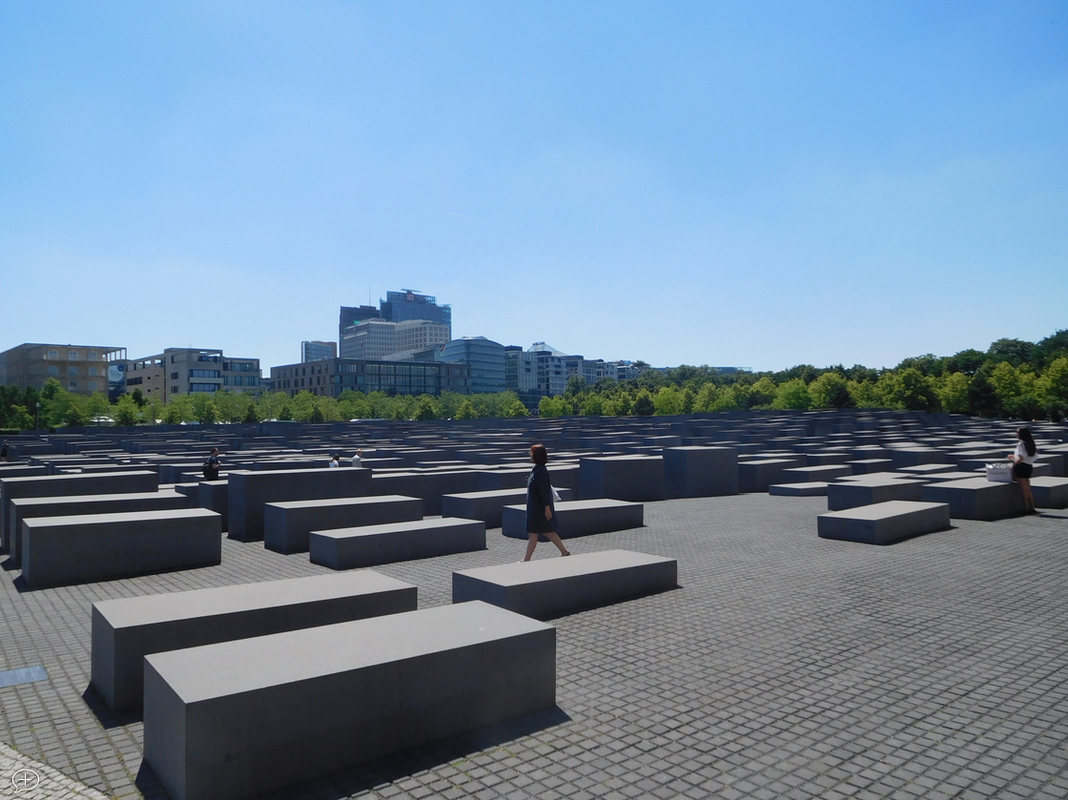
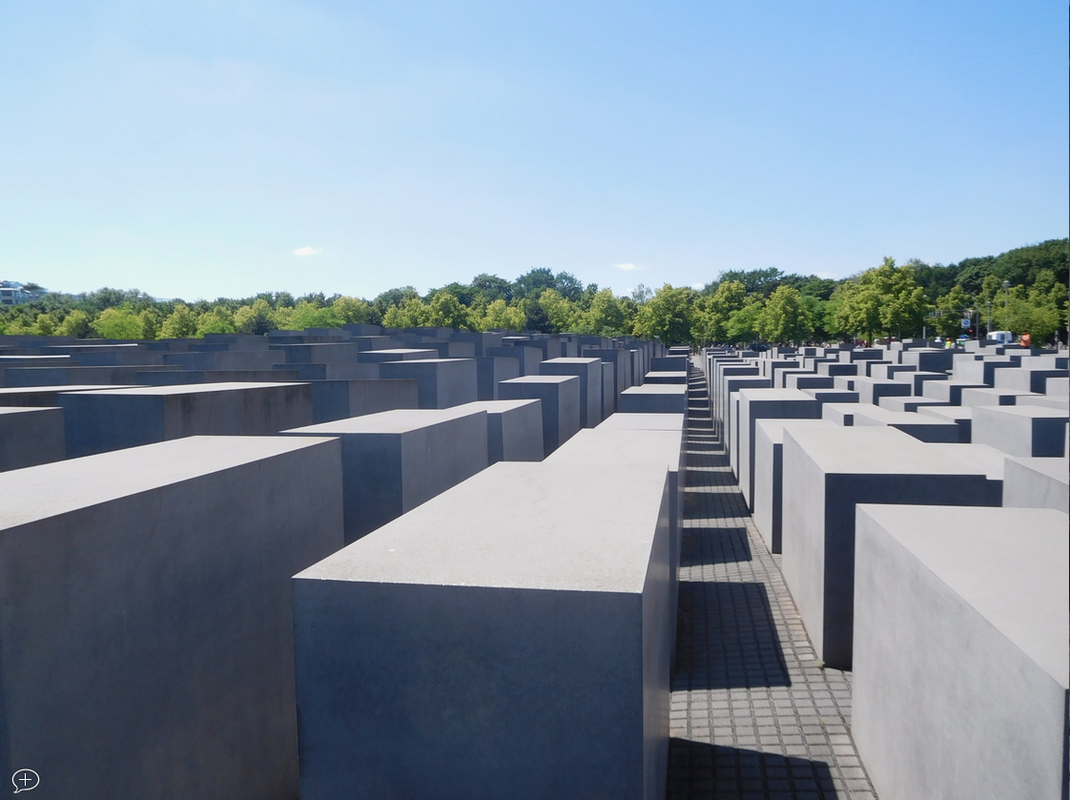
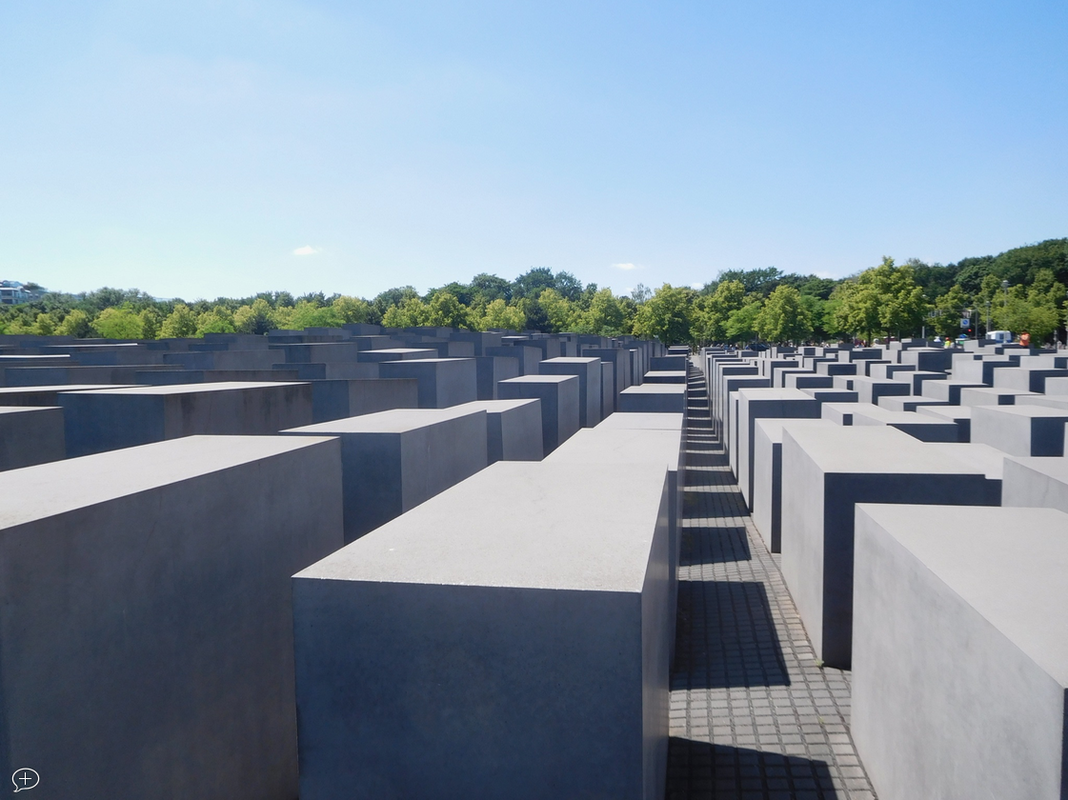
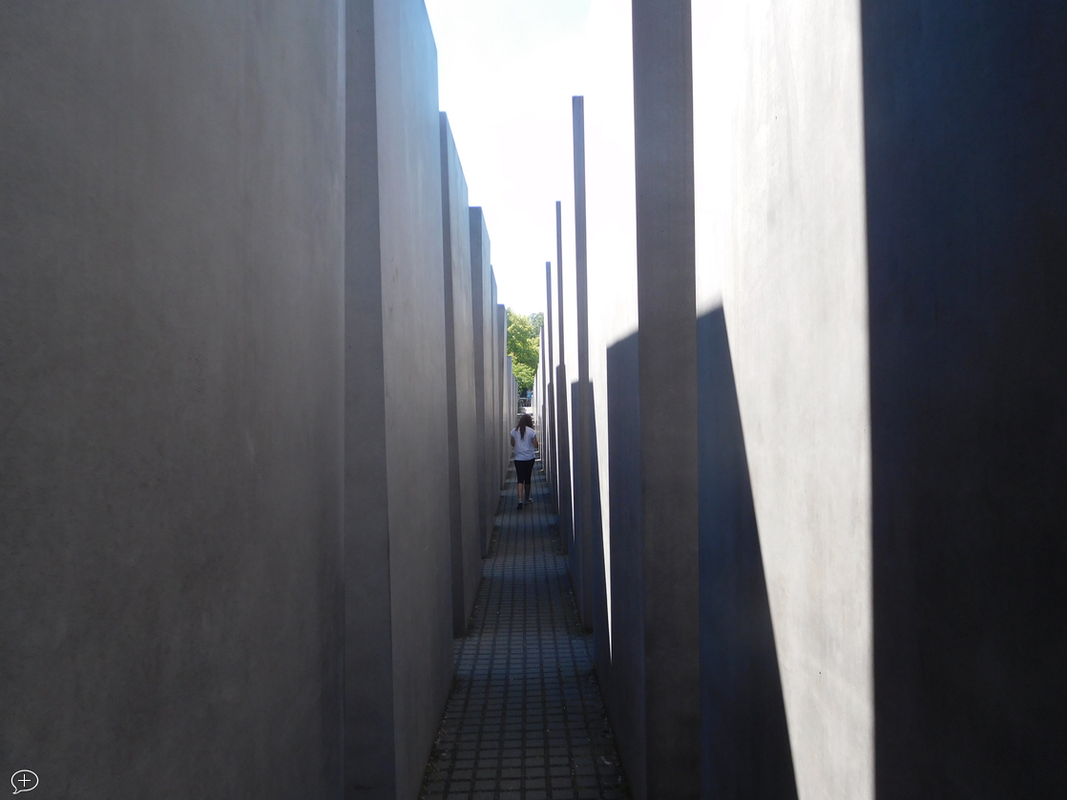
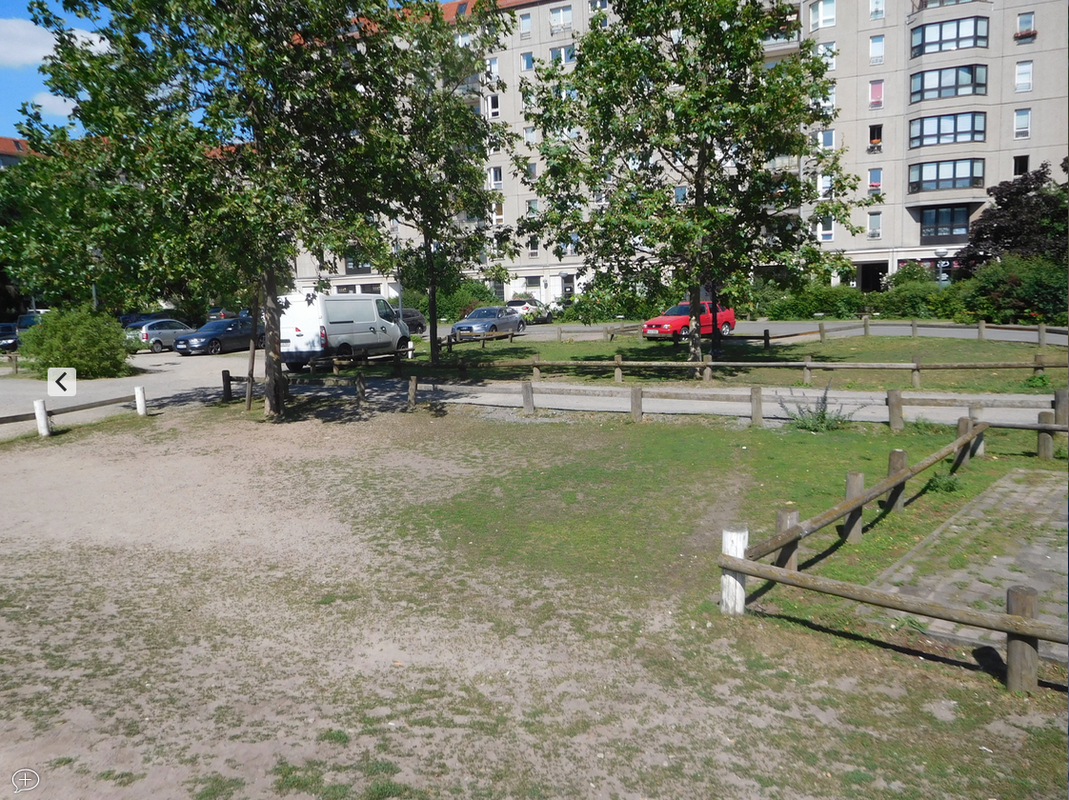
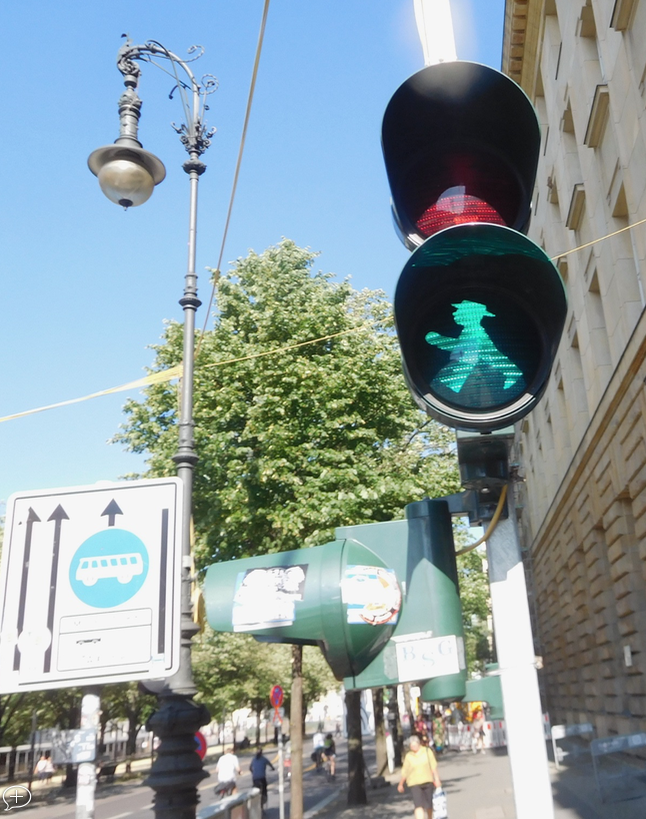
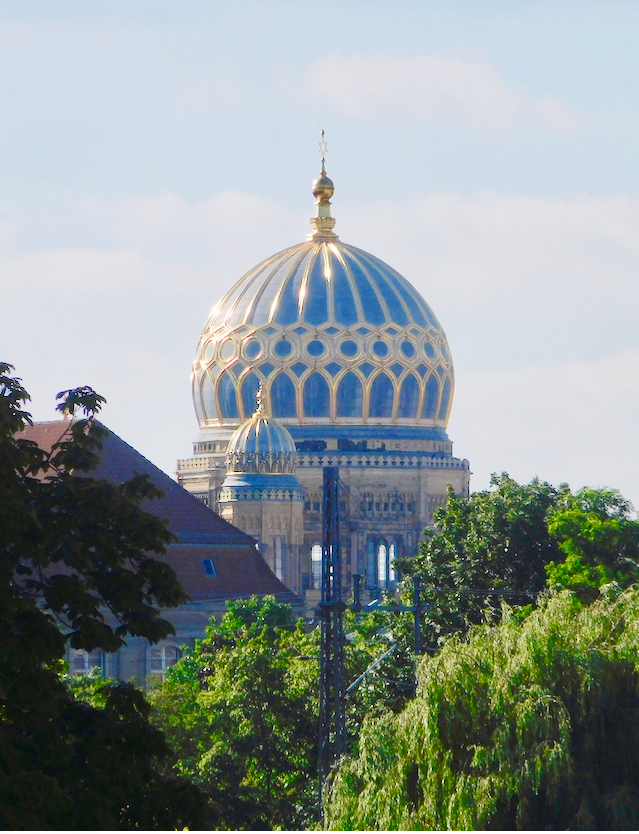
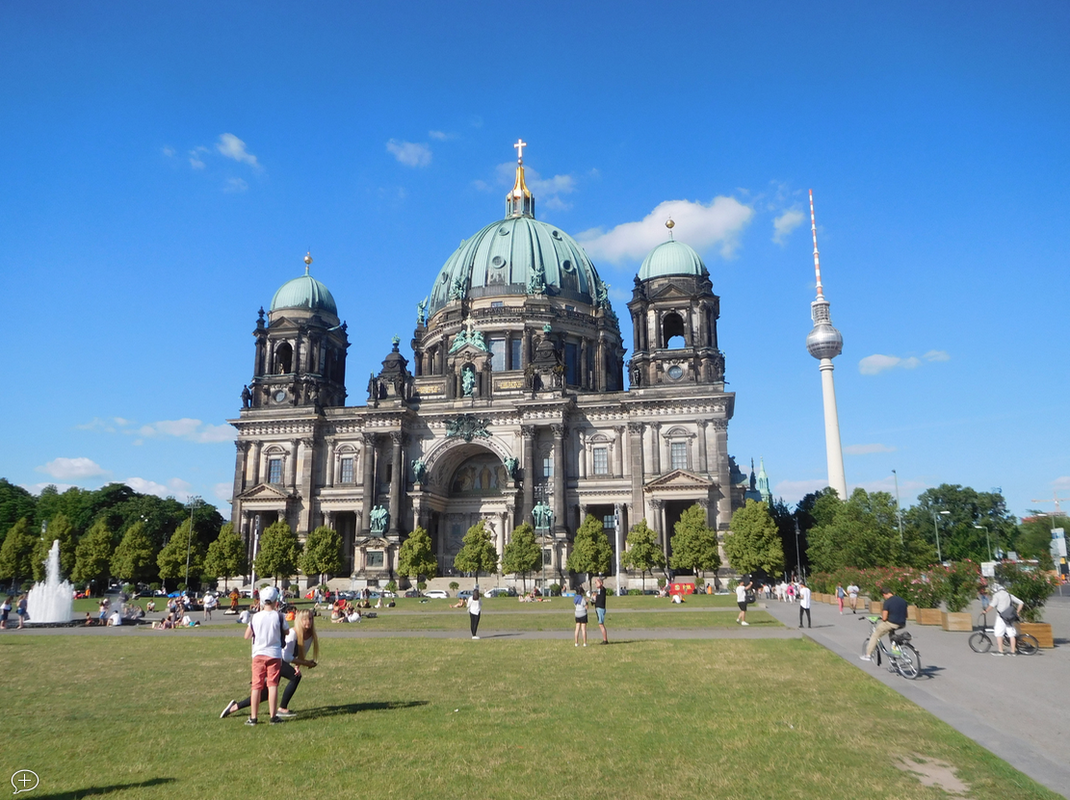
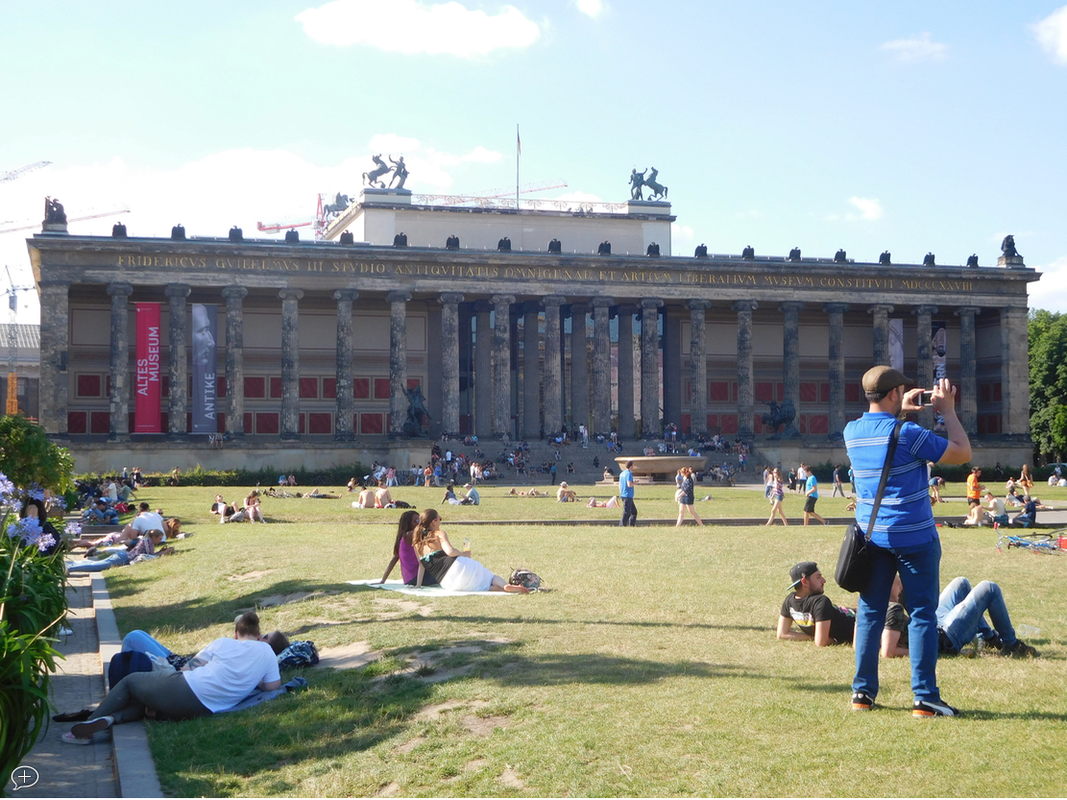
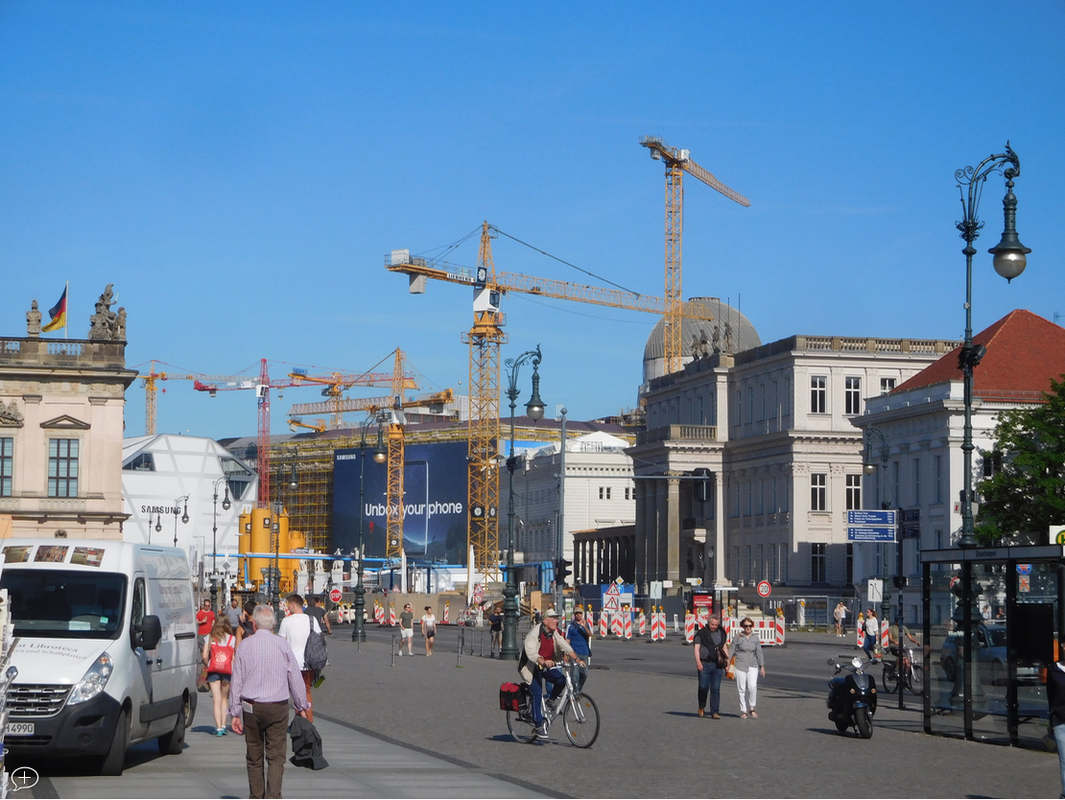
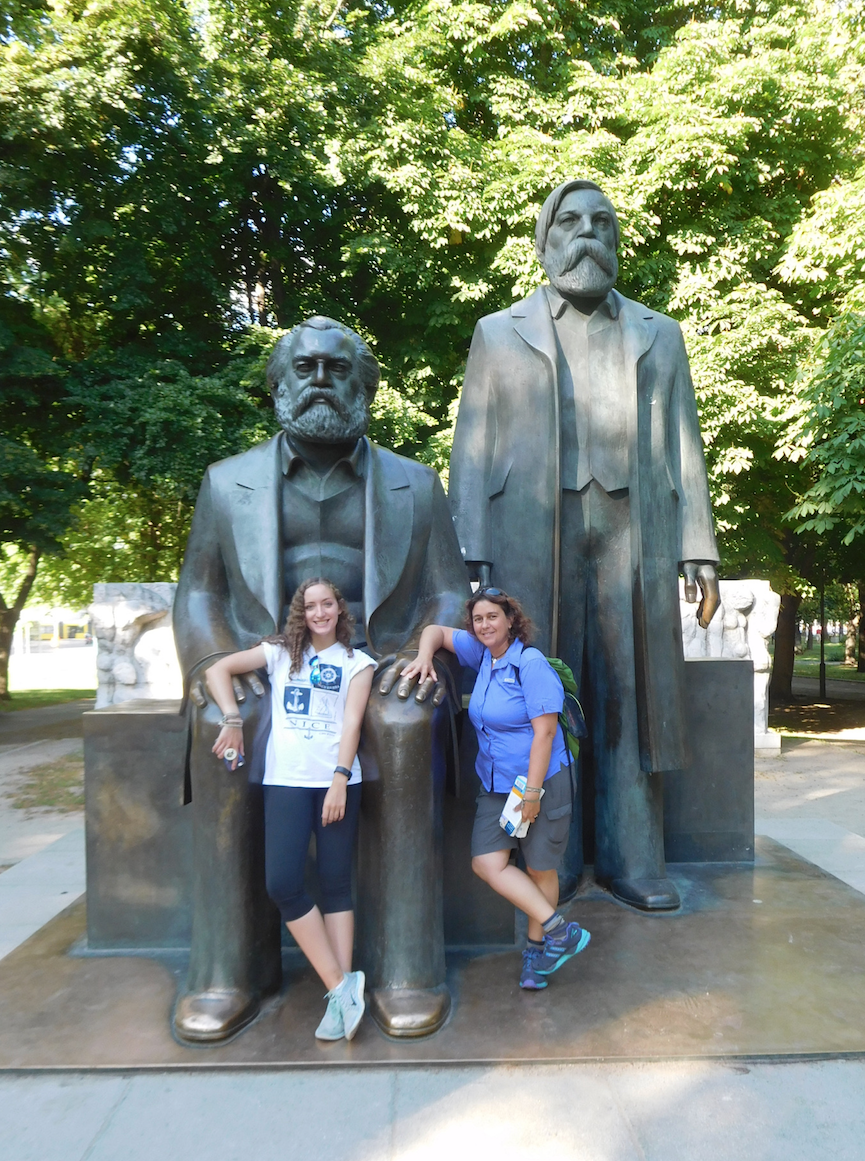
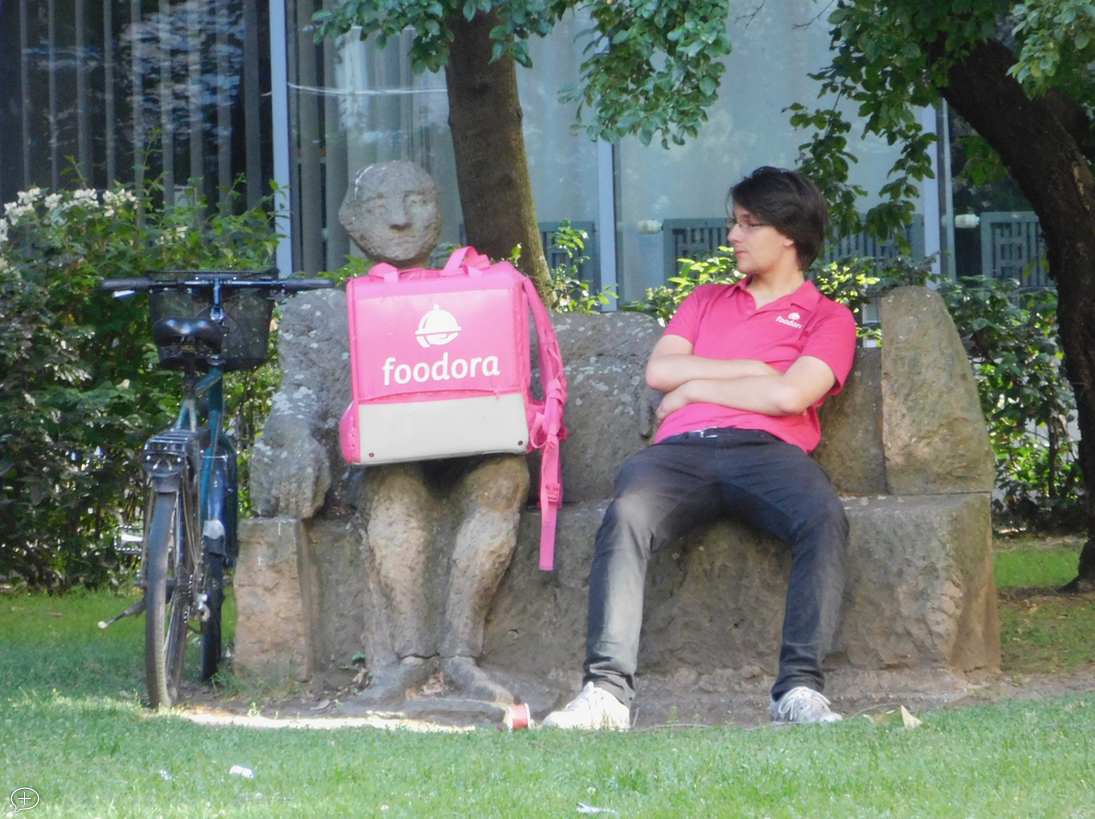
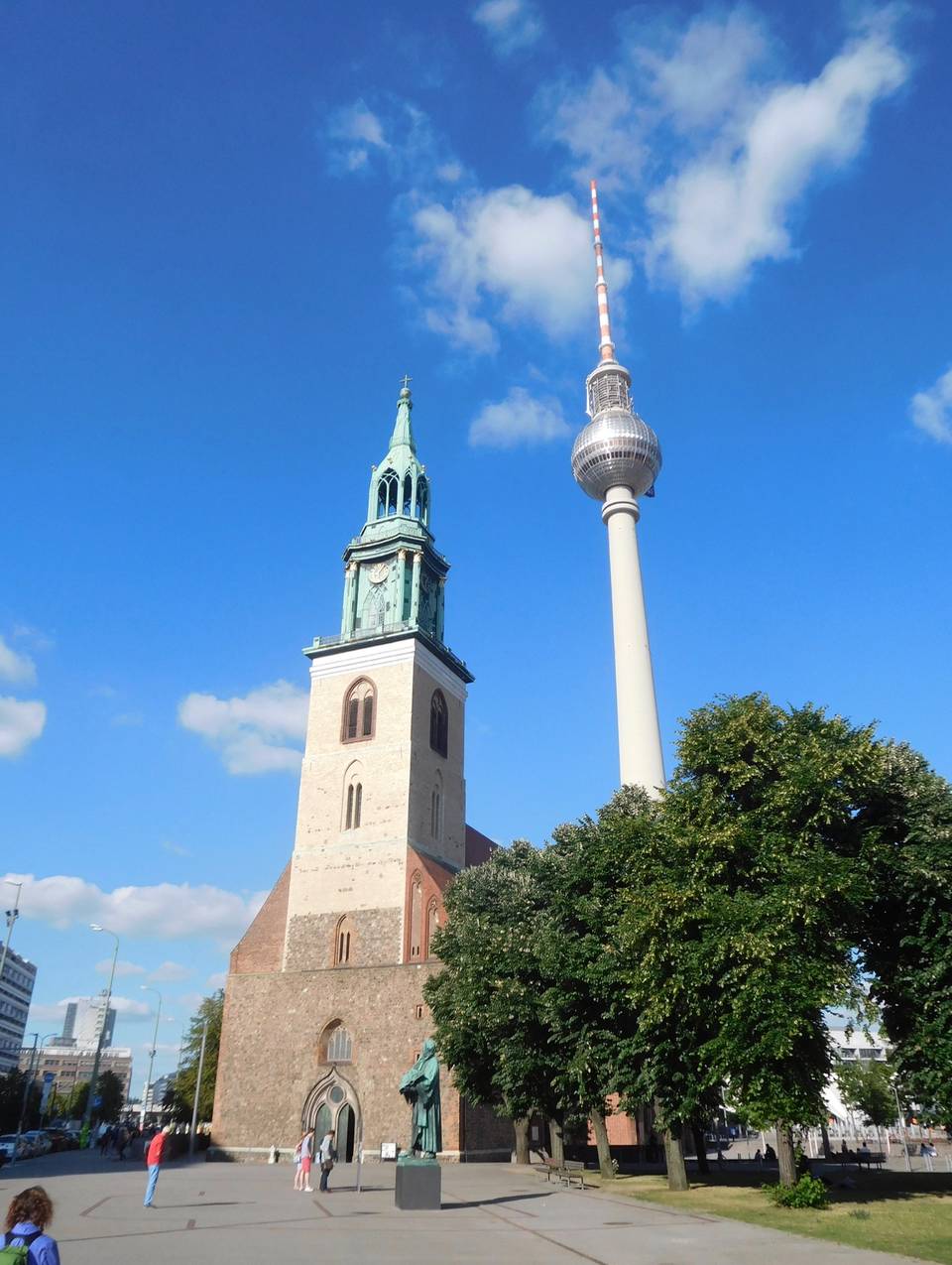
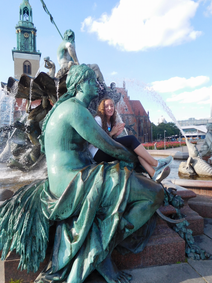
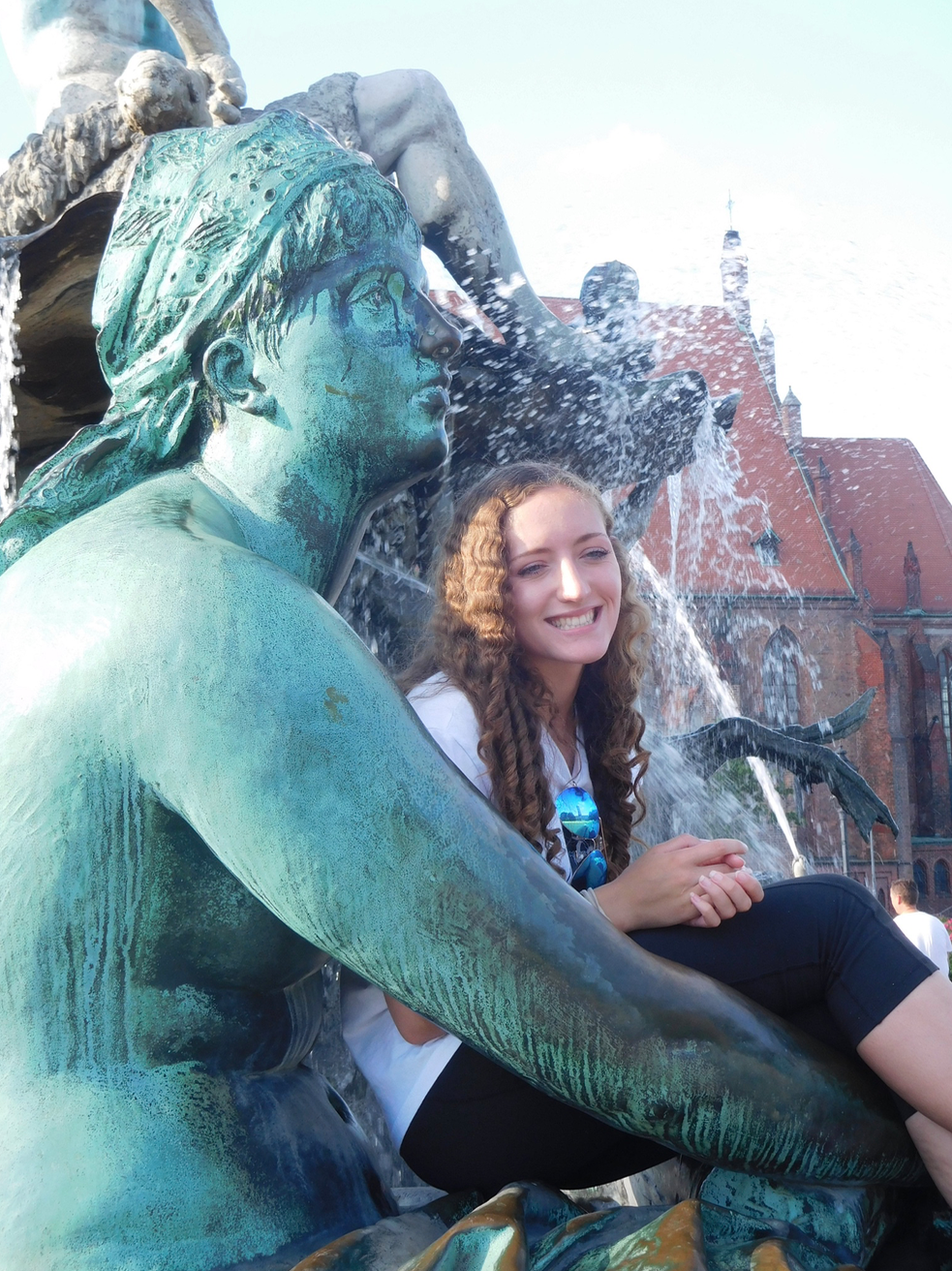
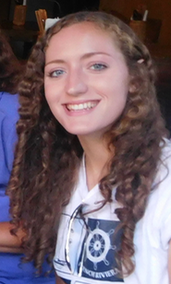
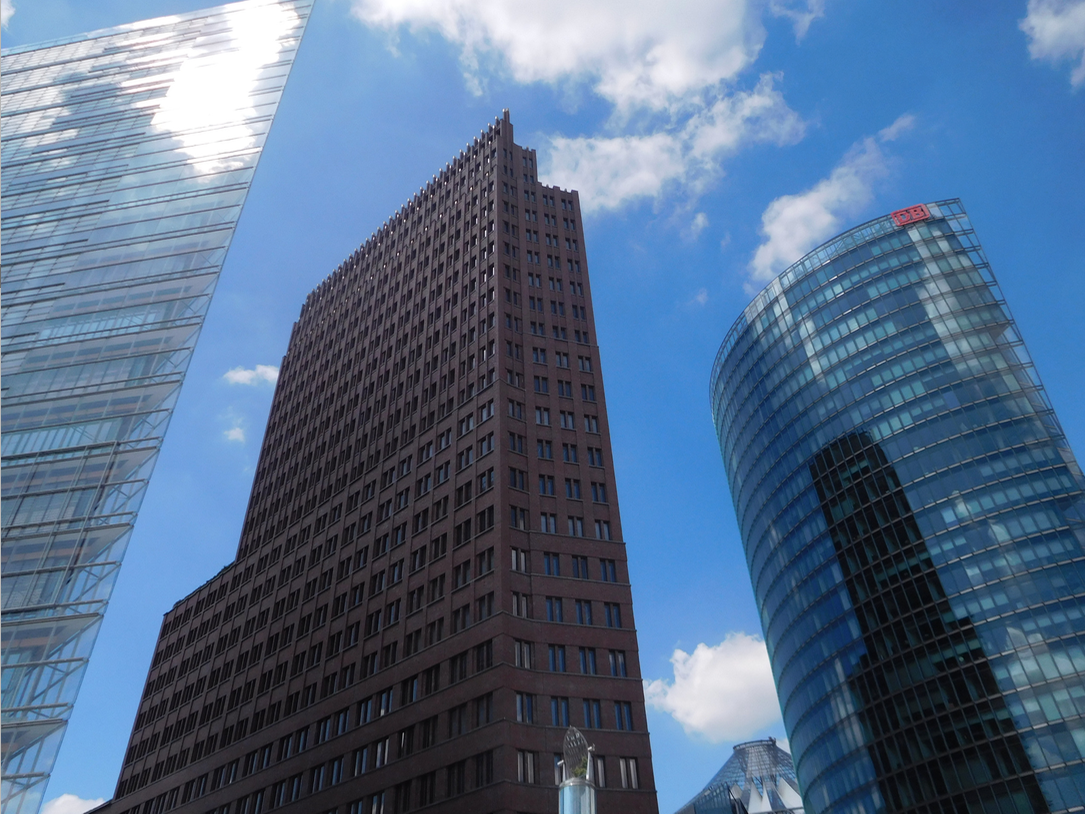
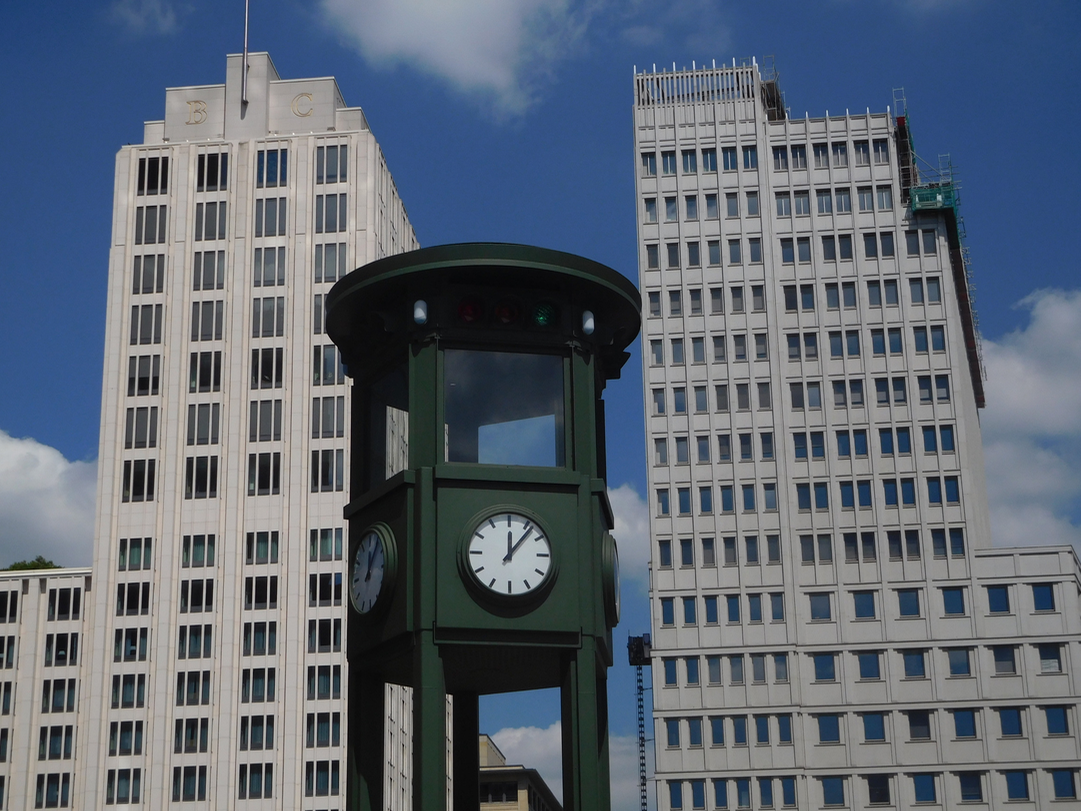
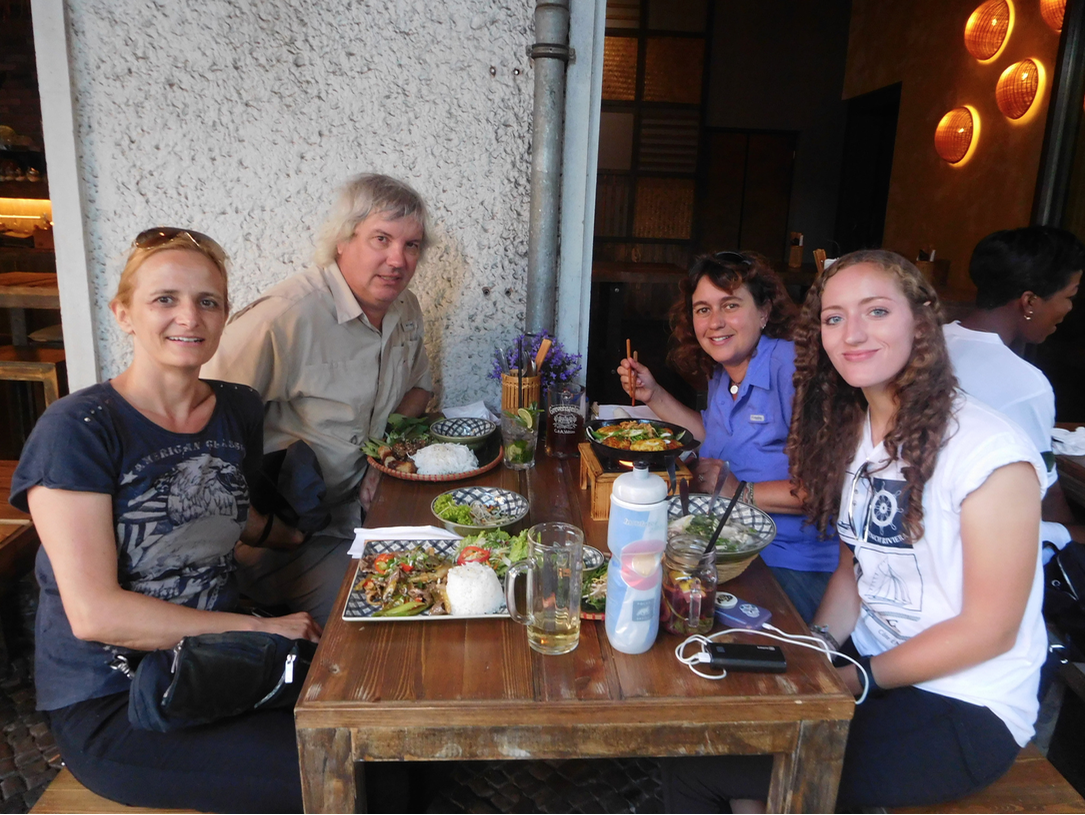
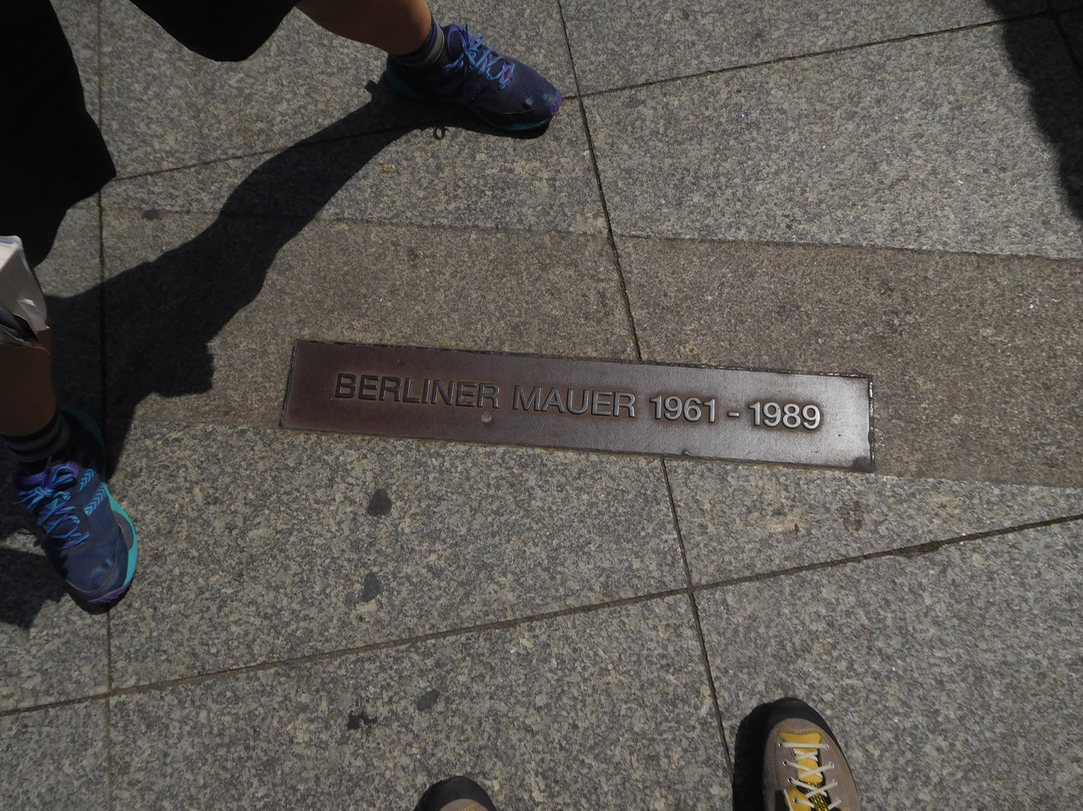
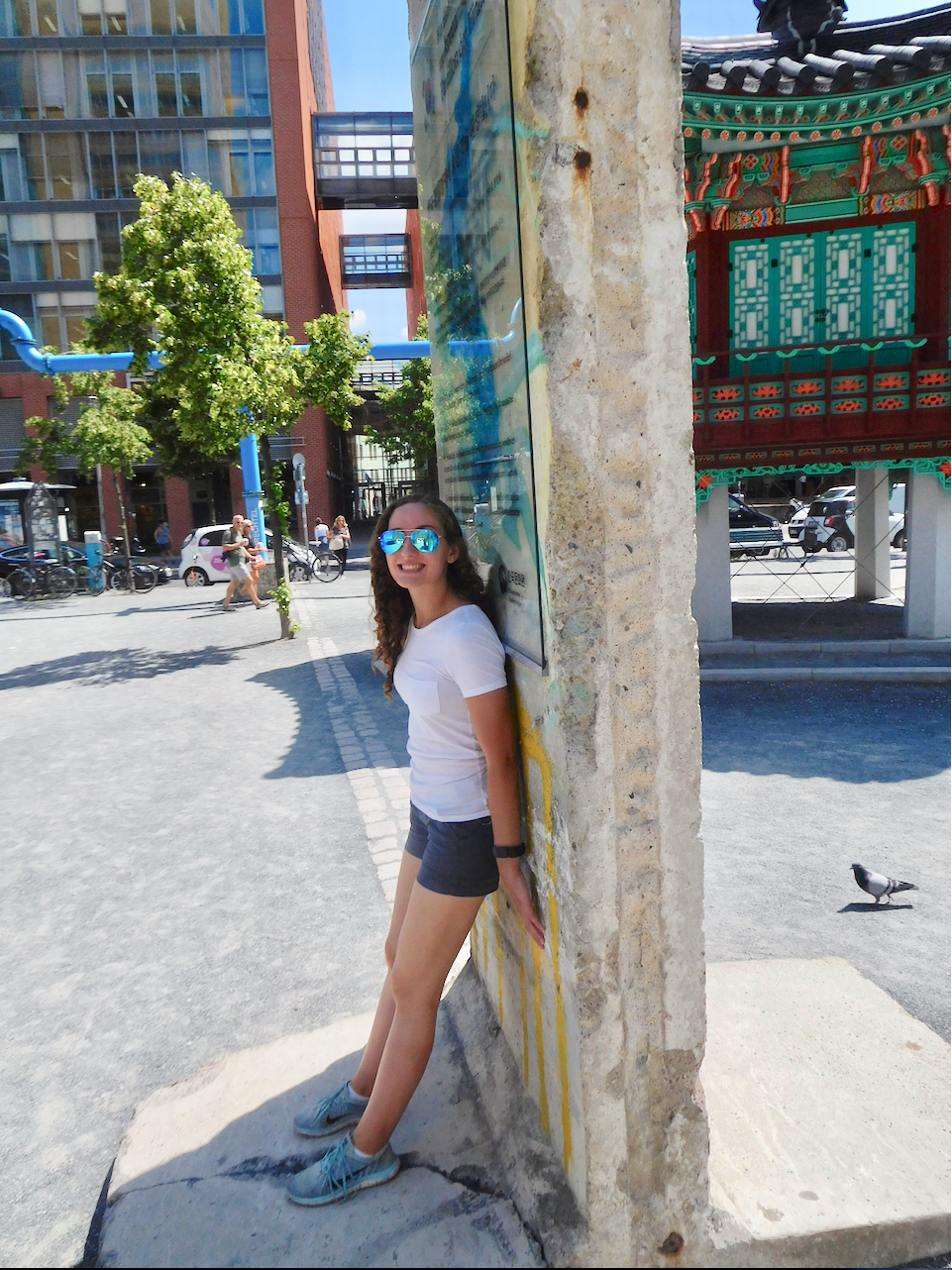
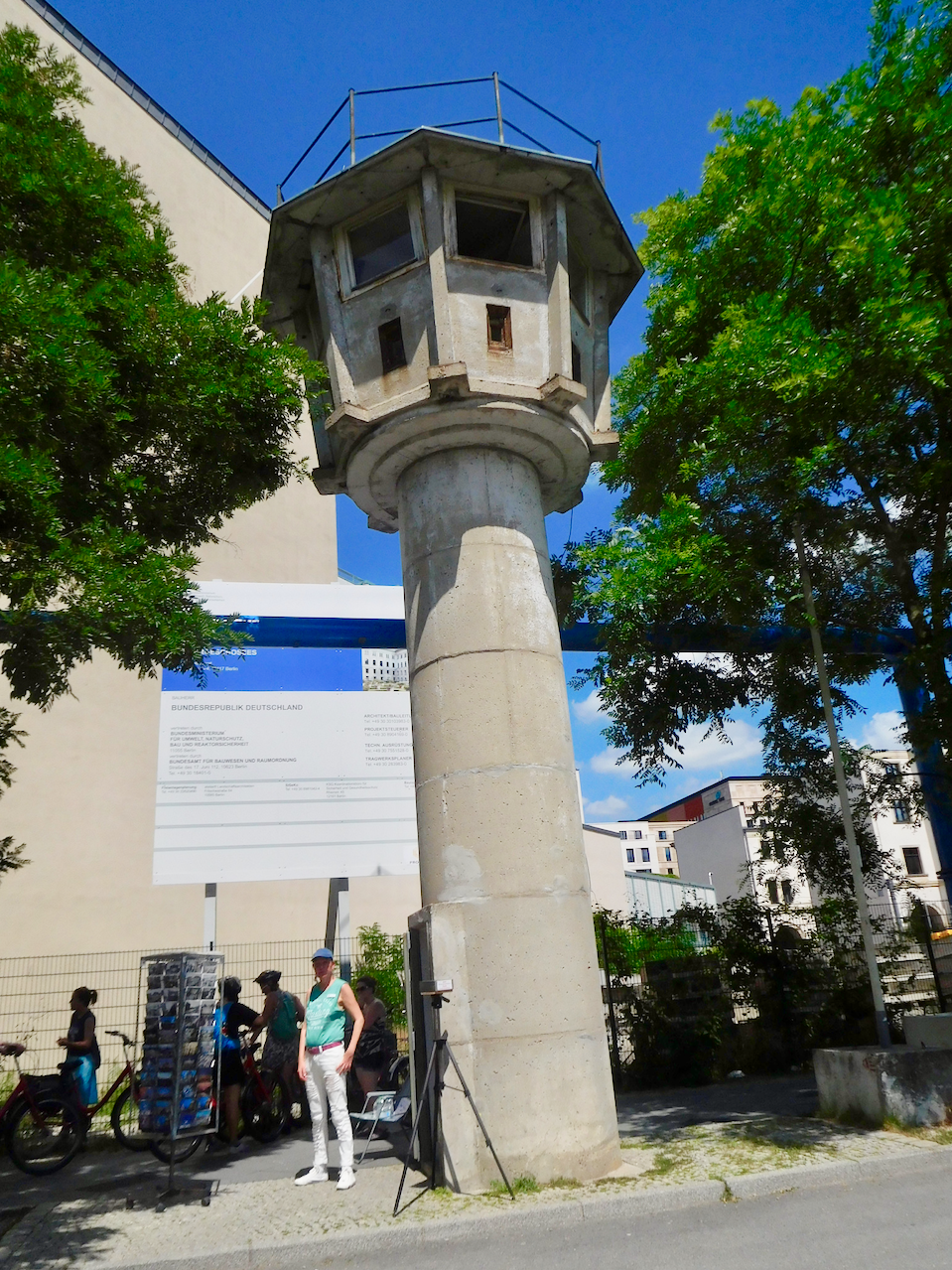
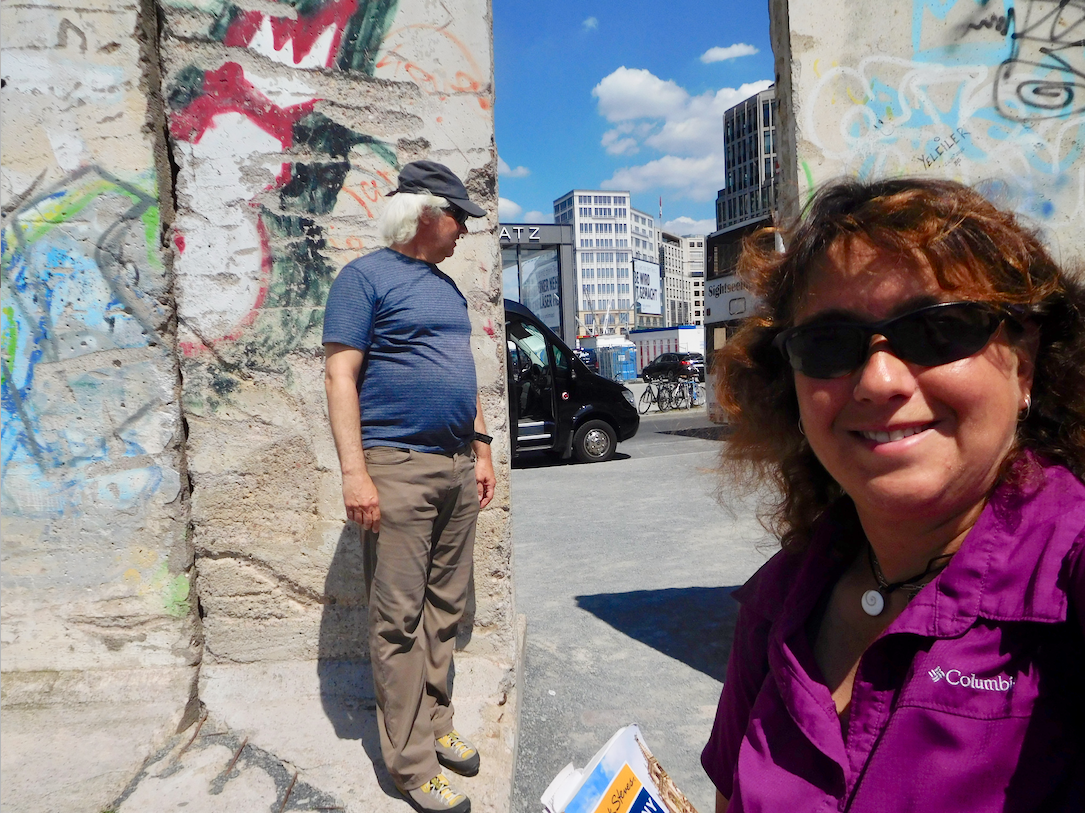
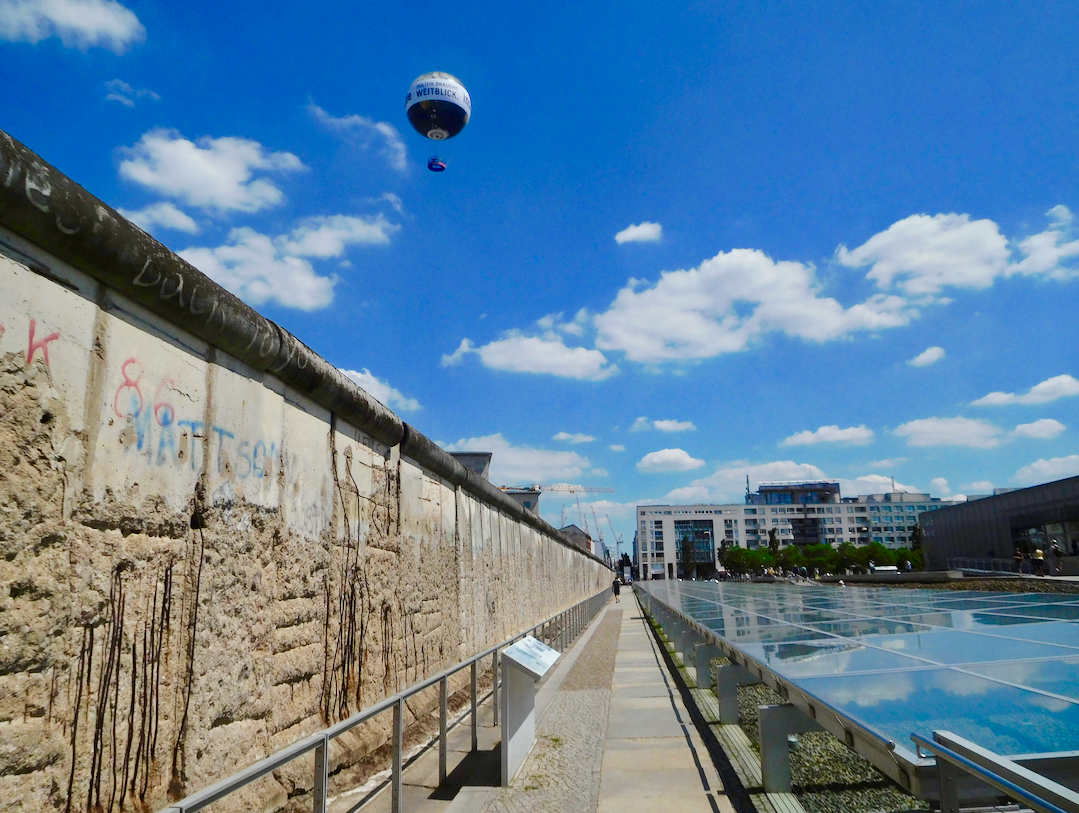
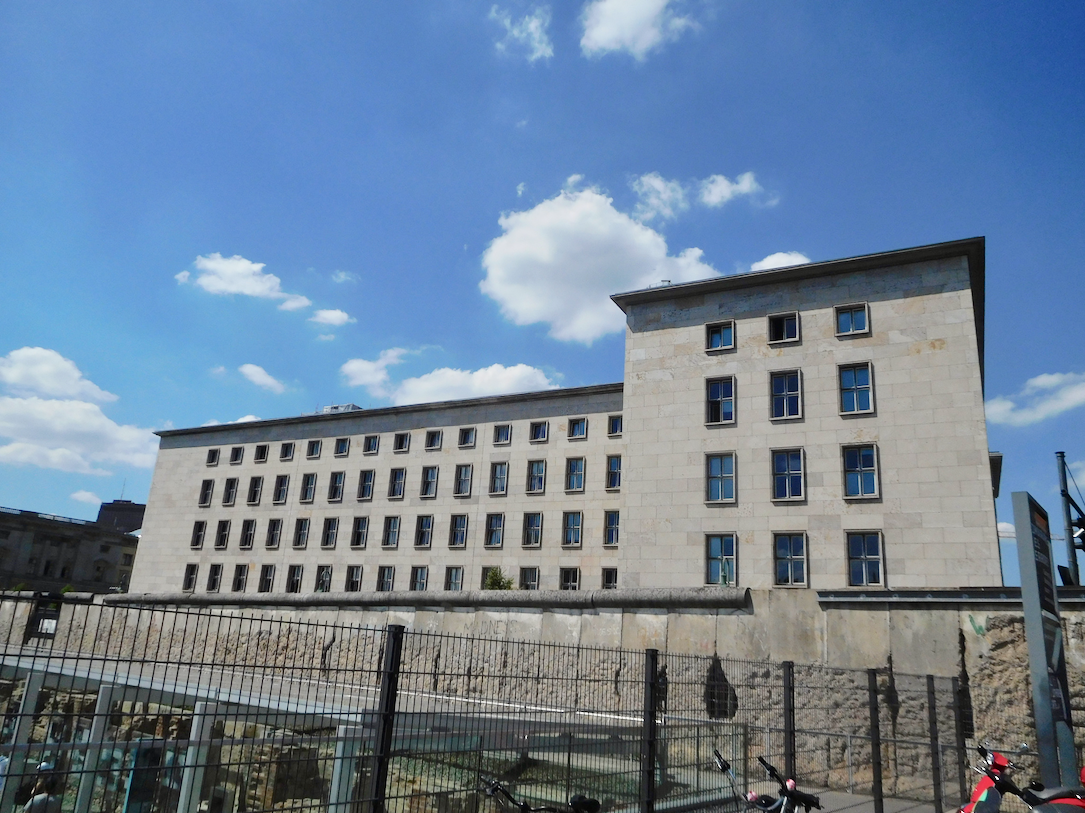
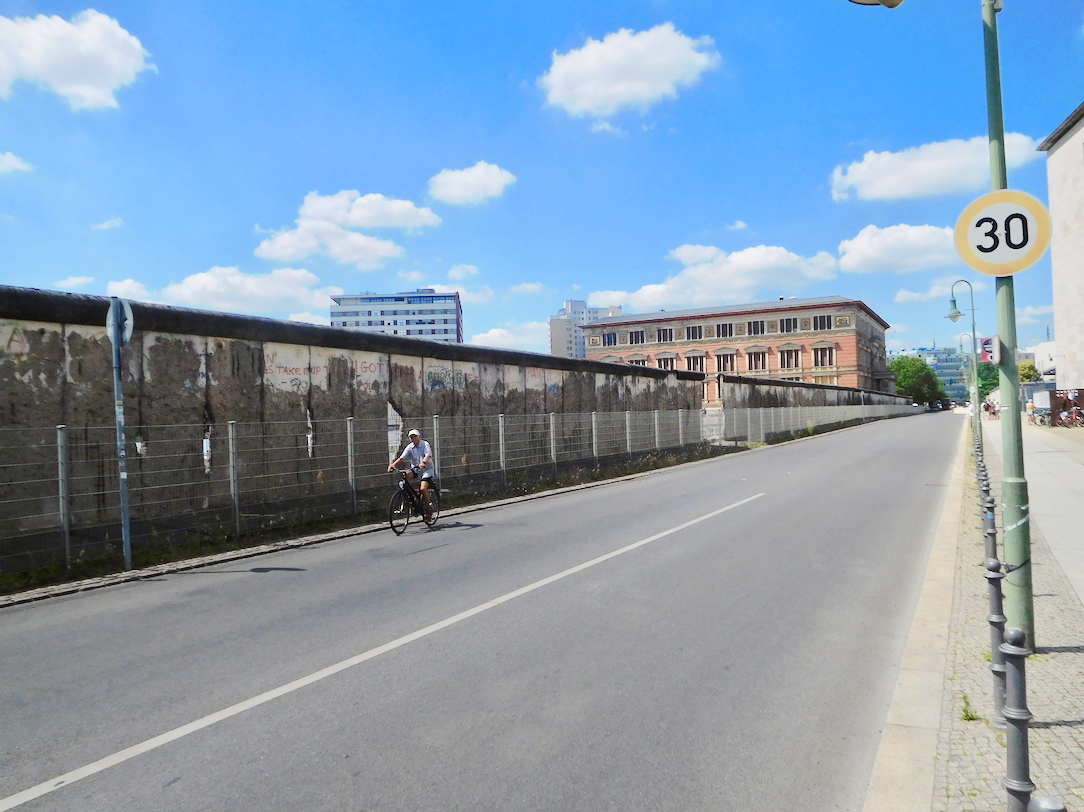
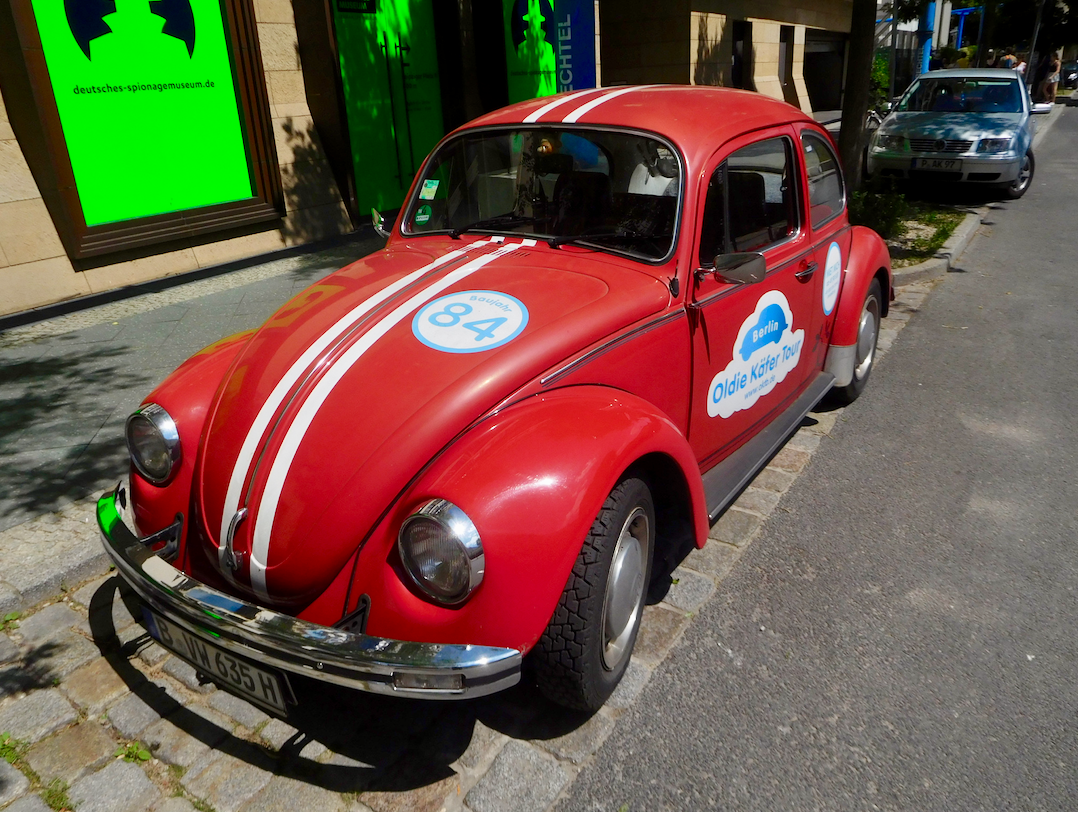
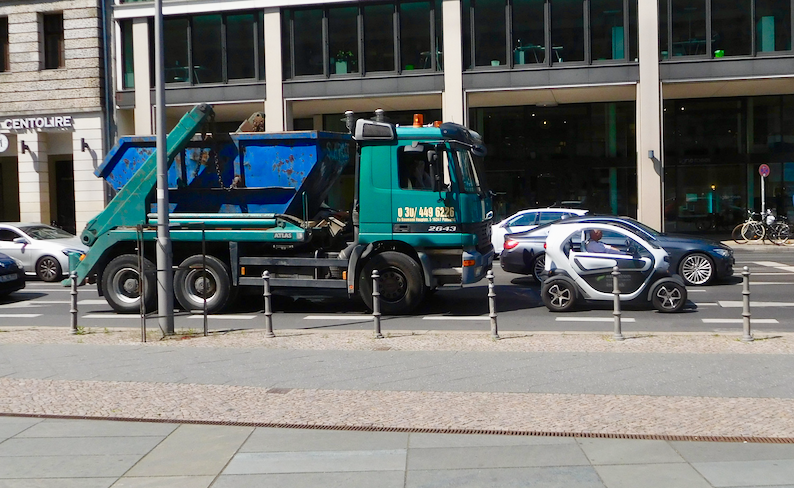
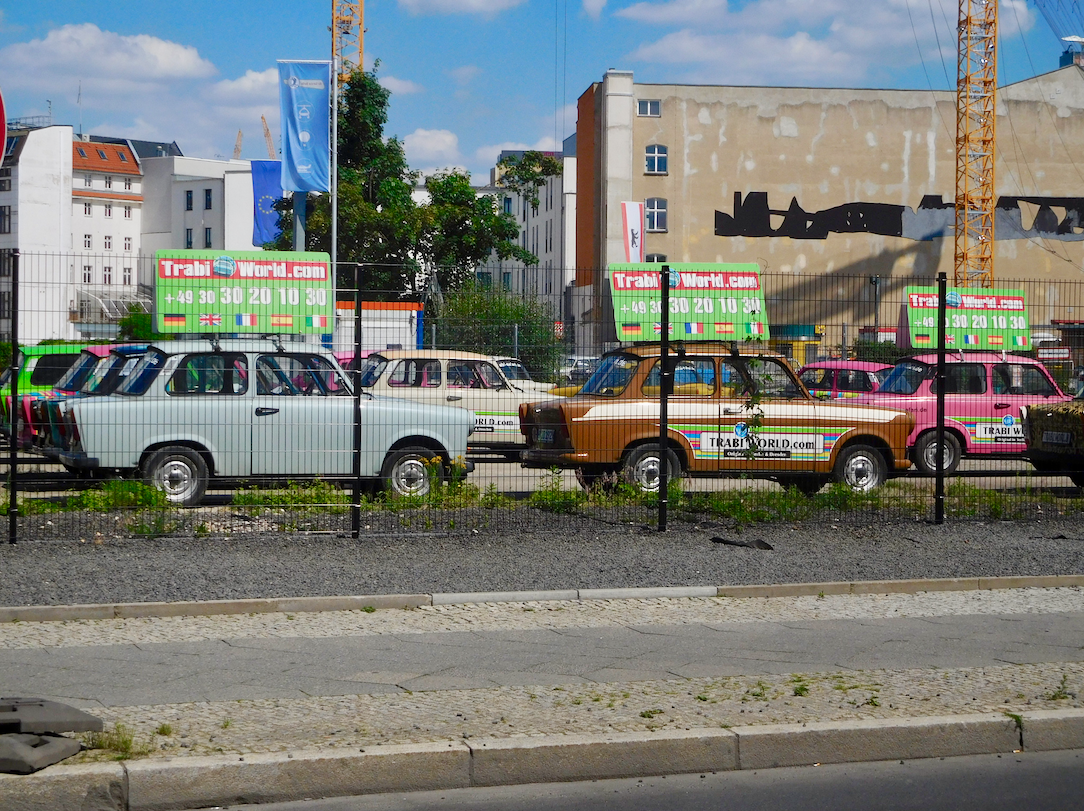
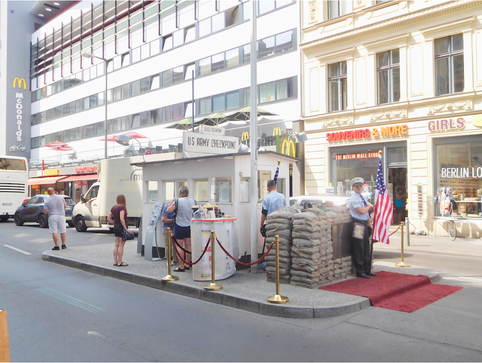
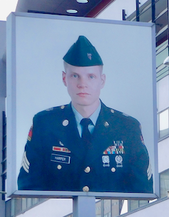
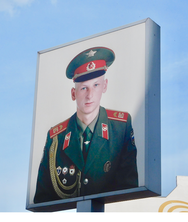
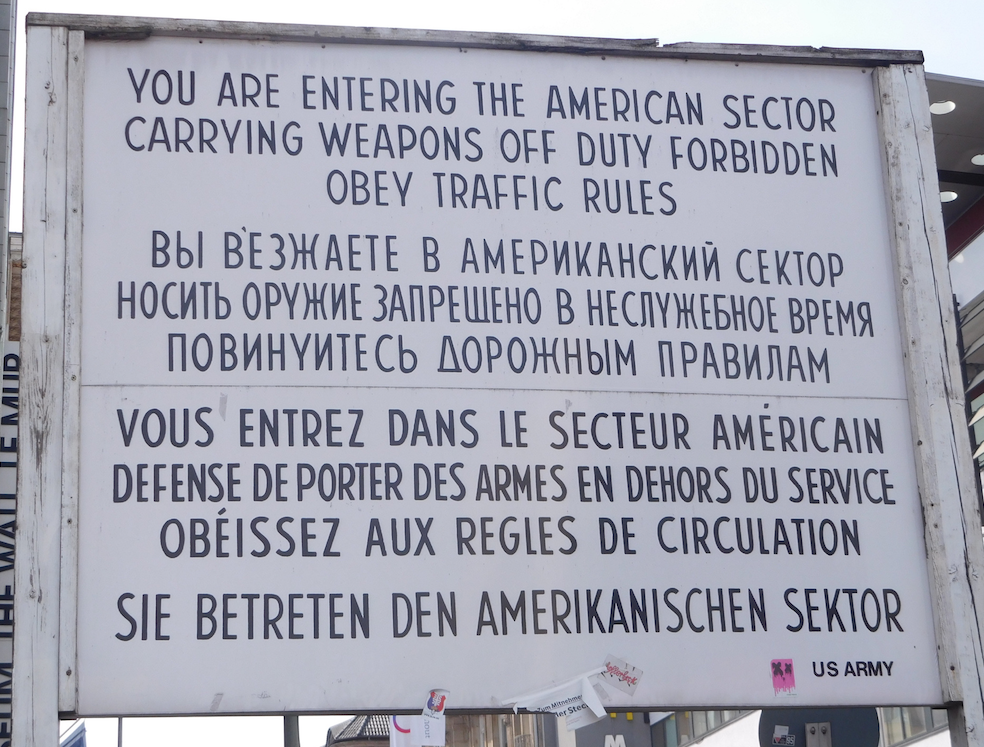
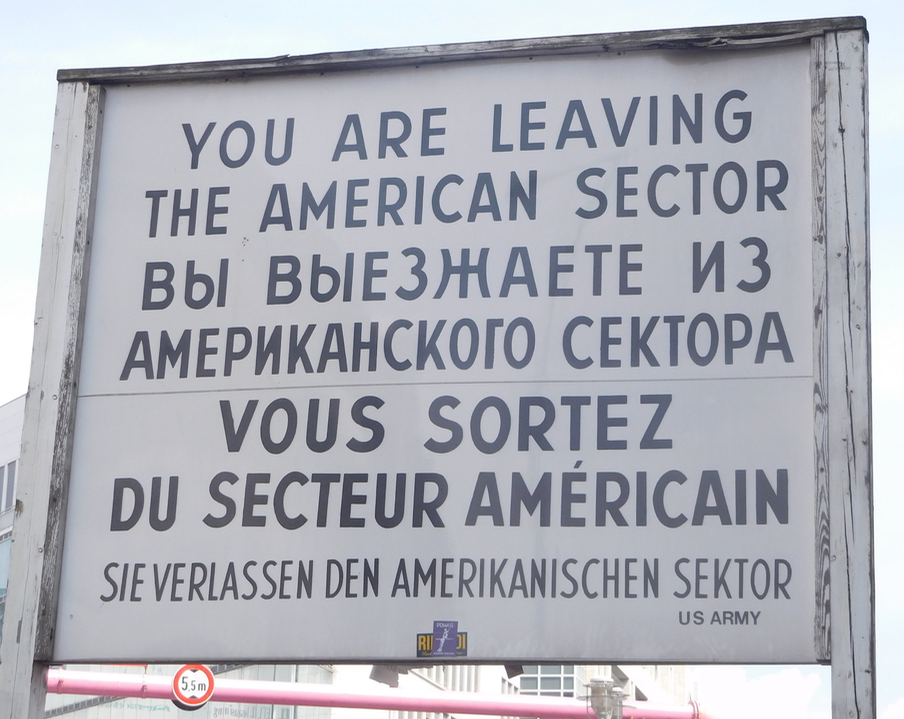
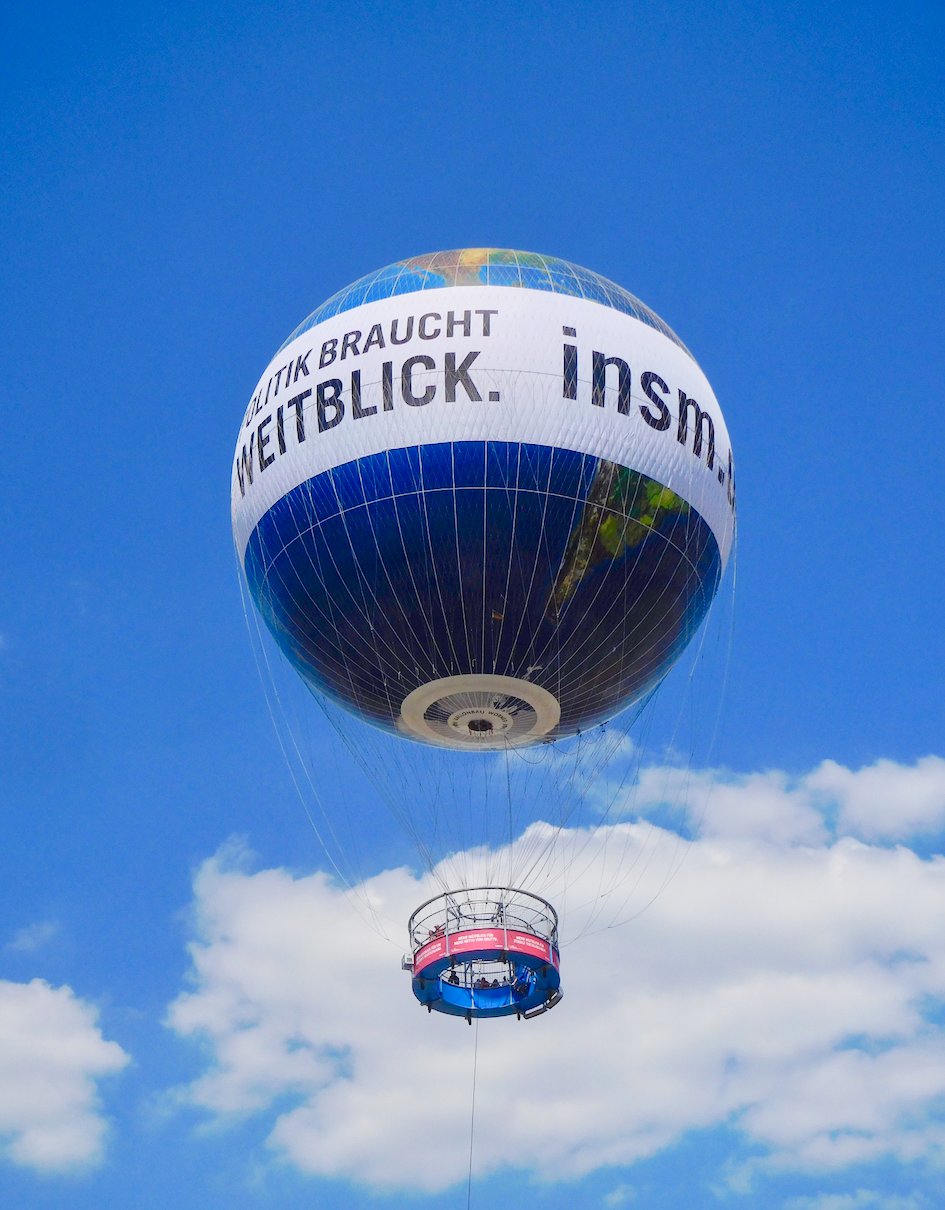
 RSS Feed
RSS Feed
